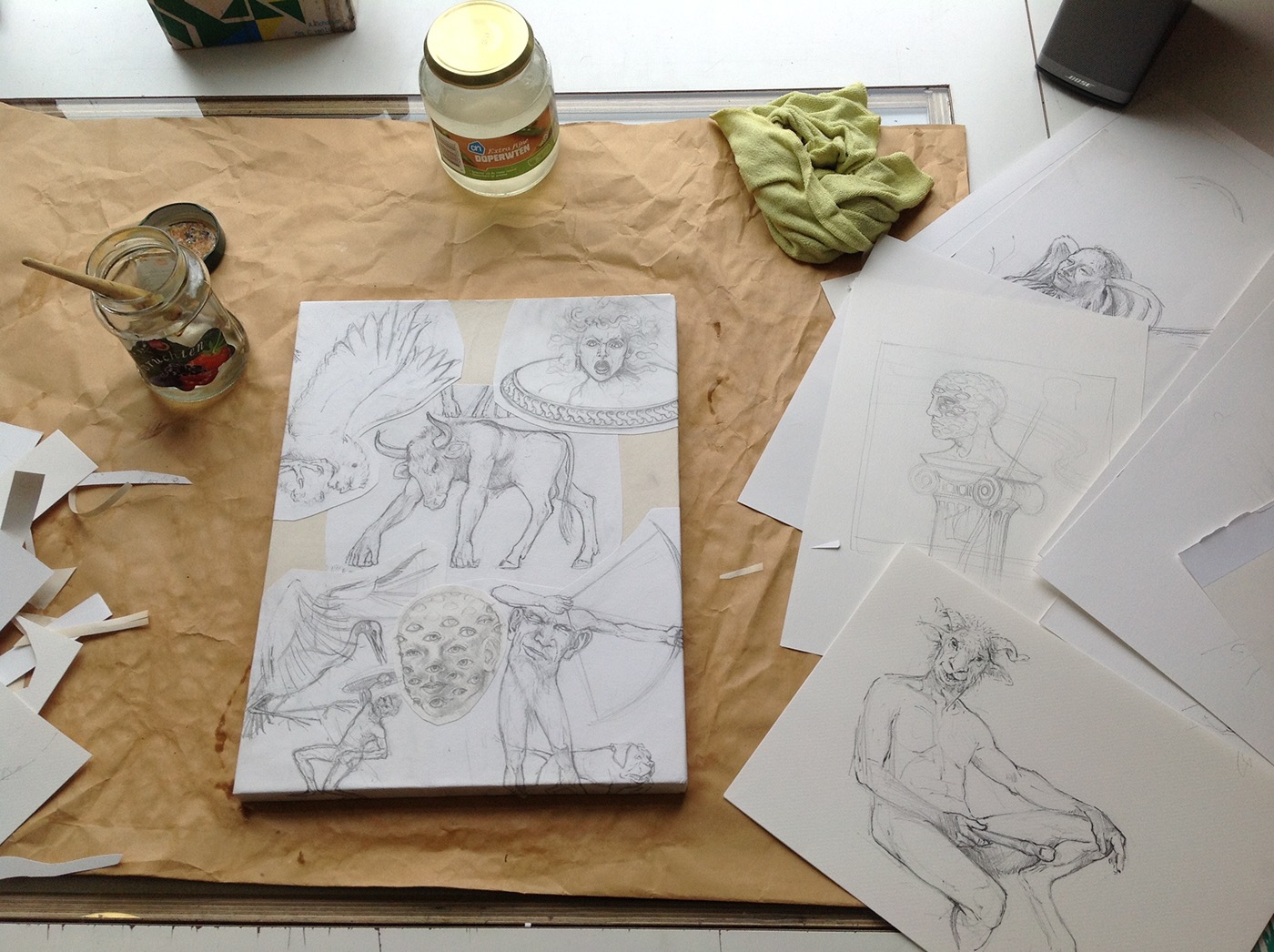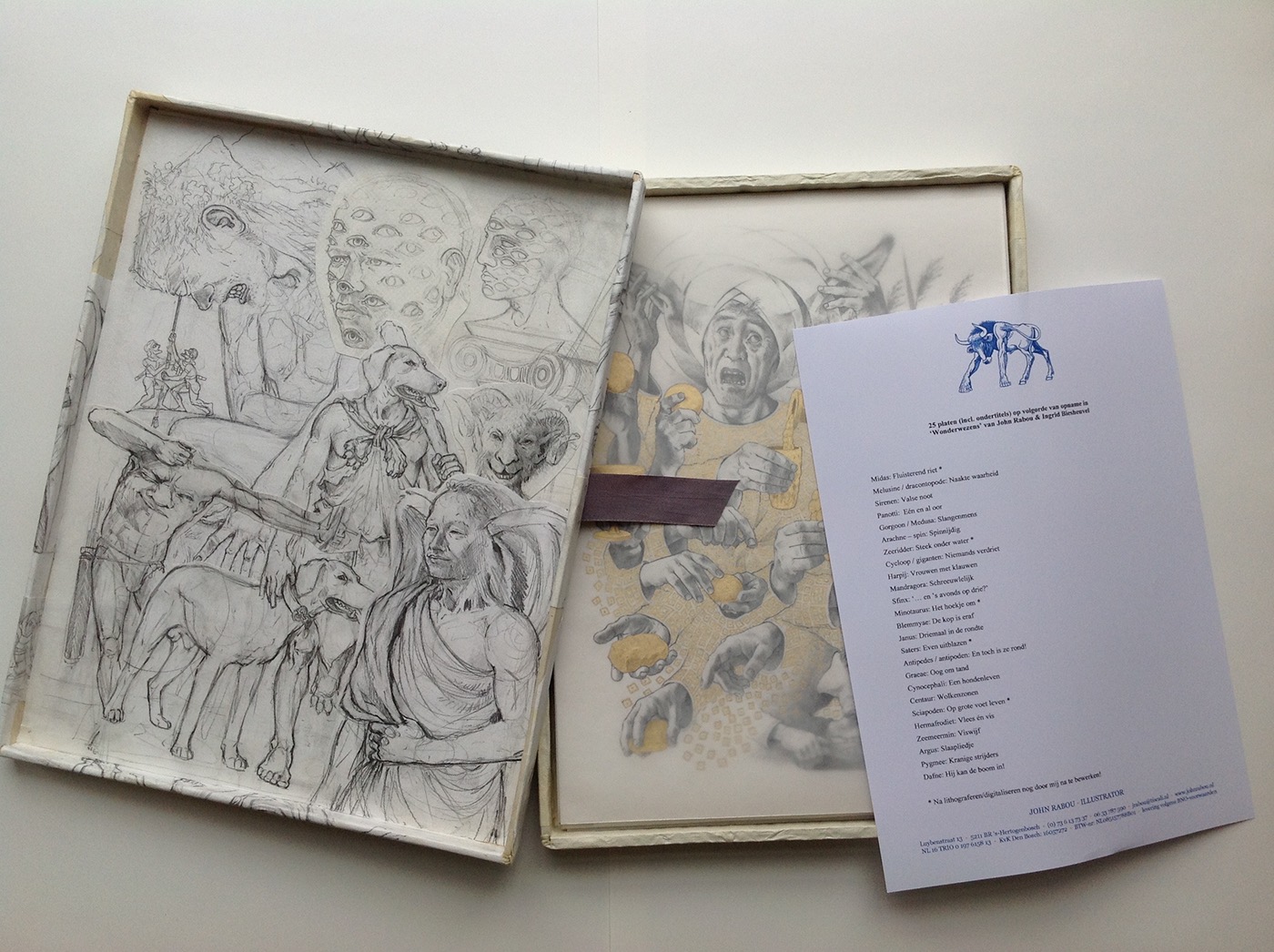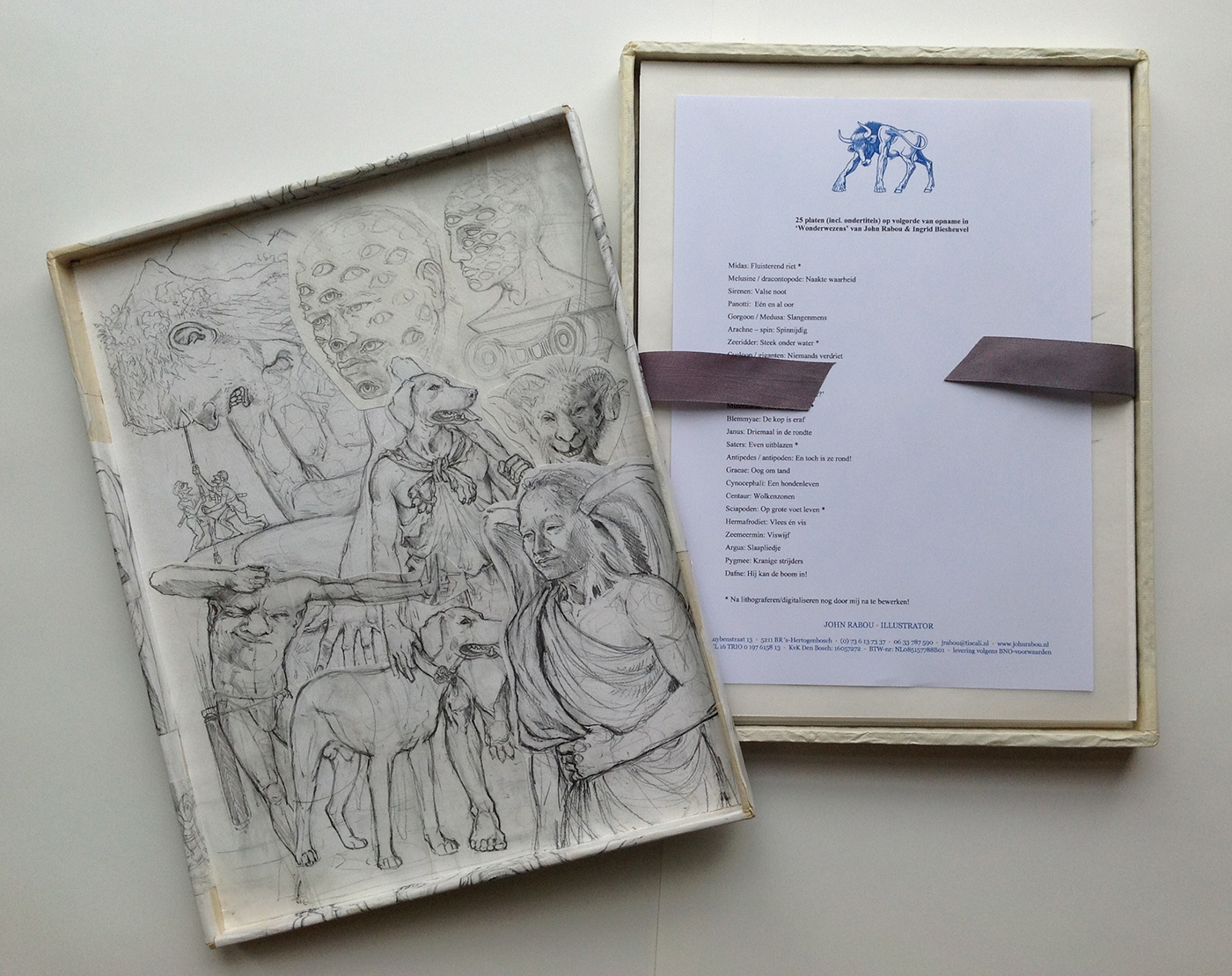This first one is actually a wordplay in Dutch, but in English it doesn't work, I'm afraid.
I'll explain:
In English there are different names for a bird like this: namely heron and egret.
In dutch we only have one word for the different species: namely reiger.
So the blue heron is in Dutch "blauwe reiger"
And the cattle egret is called "koereiger" in Dutch.
So this bird should be called to the letter "cow heron", but that's un unknown name in English.
And the cattle egret has quite another appearance than this one.

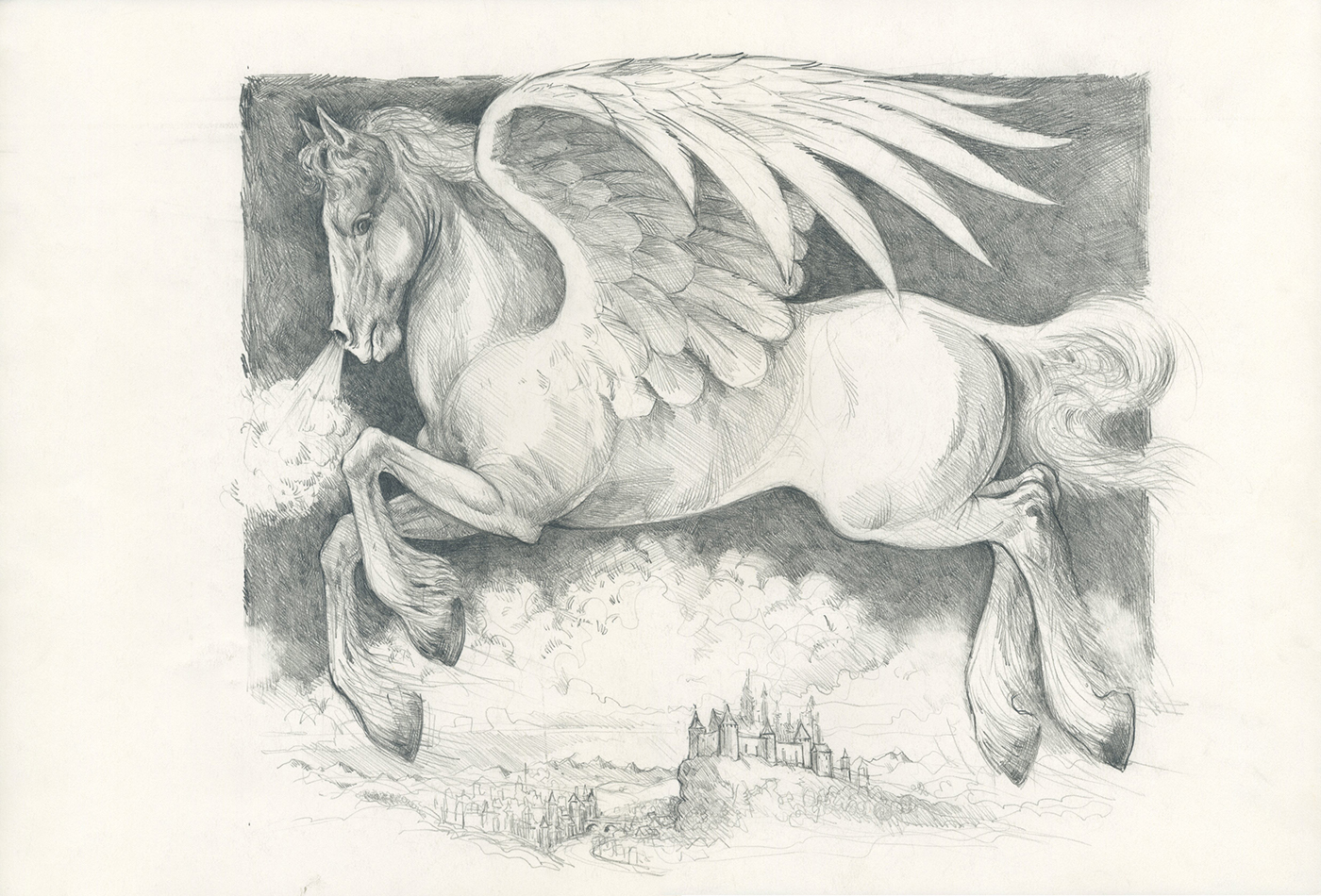
Pegasus-study
For many years I have had a keen interest in all things mythological and medieval, as can be seen in my other project Ferguut, the knight with the White Shield.
One of the themes that fascinates me immensely is medieval natural history, recorded in so called bestiaries.
Beautiful examples of a bestiary are e.g. the Peterborough and Aberdeen Bestiary and in Holland Jacob van Maerlant's Der nature bloeme (the best from nature).
For this project I'd like to focus on the manlike creatures, which are frequently described and depicted in these manuscripts.
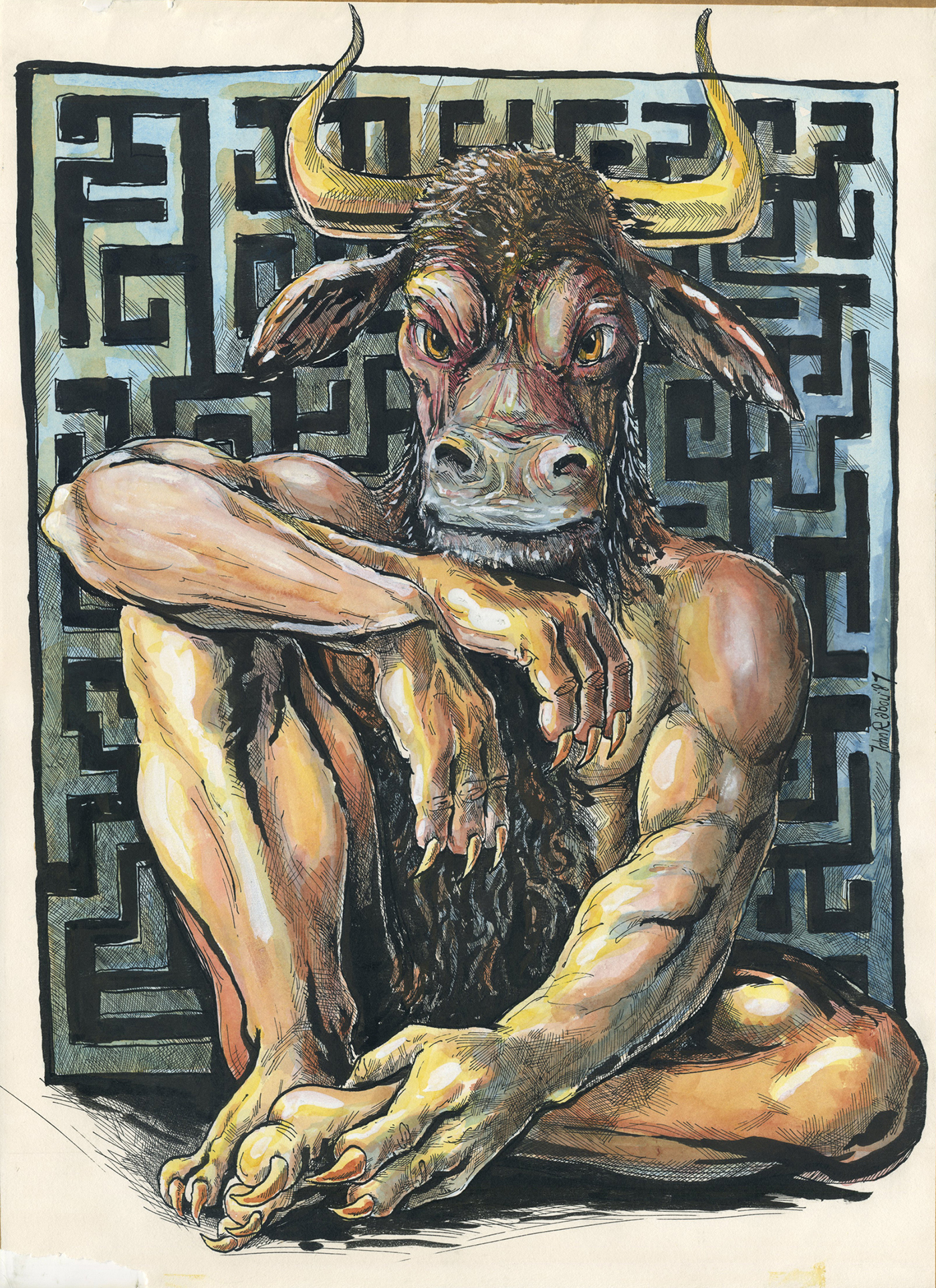
Minotaur-study

Minotaur-study
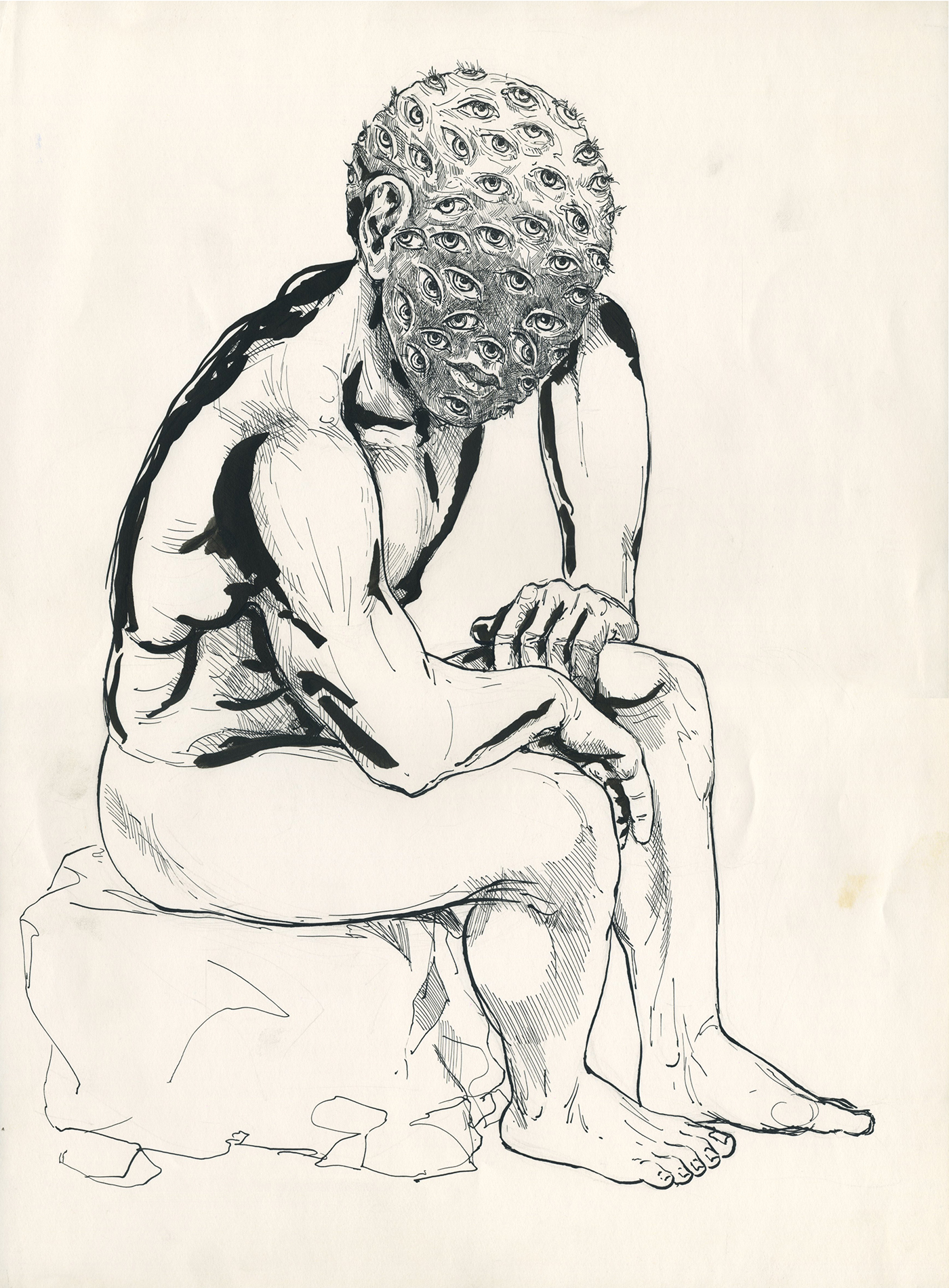
Argus-study

Argus-study
For this project I picture myself a series of small - about 15 x15 cm - grayscale illustrations, made in pencil with a touch of colour or - in the cases here below - goldleaf.
I intend to add new illustrations regularly.
In Greek mythology, the Minotaur was a creature with the head of a bull on the body of a man or, as described by Roman poet Ovid, "part man and part bull". He dwelt at the center of the Labyrinth, which was an elaborate maze-like construction designed by the architect Daedalus and his son Icarus, on the command of King Minos of Crete. The Minotaur was eventually killed by the Athenian hero Theseus. Minos' daughter Ariadne fell madly in love with Theseus and helped him navigate the labyrinth using a ball of thread, allowing him to retrace his path.

"Taking up the thread"
Argus Panoptes of Argos was a hundred-eyed giant in Greek mythology. He was a giant whose name "Panoptes" meant "the all-seeing one". He was a servant of Hera; his main task was to guard Io, a nymph that Zeus was involved with and who the god Hera transformed into a cow. Argus had to keep the lustful Zeus away from his mistress. Zeus, in his efforts to approach Io, told Hermes to disguise himself as a shepherd and make Argus go to sleep. So Hermes did, using spells through his music. As soon as he fell asleep, Hermes slew him.

"Hermes' lullaby"
Skiapods (also monopods) are mythological human creatures with a single, large foot extending from a leg centered in the middle of their bodies. The name Skiapodes is derived from σκιάποδες - "shadow feet" in Greek, monopod from 'one legged' in Greek. Monopods are described by Pliny the Elder in his Natural History, where he reports travelers' stories from encounters or sightings of Monopods in India. Pliny remarks that they are first mentioned by Ctesias in his book Indika (India), a record of the view of Persians of India which only remains in fragments. Pliny describes Monopods like this:
He [Ctesias] speaks also of another race of men, who are known as Monocoli, who have only one leg, but are able to leap with surprising agility. The same people are also called Sciapodae, because they are in the habit of lying on their backs, during the time of the extreme heat, and protect themselves from the sun by the shade of their feet.
Reference to the legend continued into the Middle Ages, for example with Isidore of Seville in his Etymologiae, where he writes:
The race of Sciopodes are said to live in Ethiopia; they have only one leg, and are wonderfully speedy. The Greeks call them σκιαπόδεϛ ("shade-footed ones") because when it is hot they lie on their backs on the ground and are shaded by the great size of their feet.
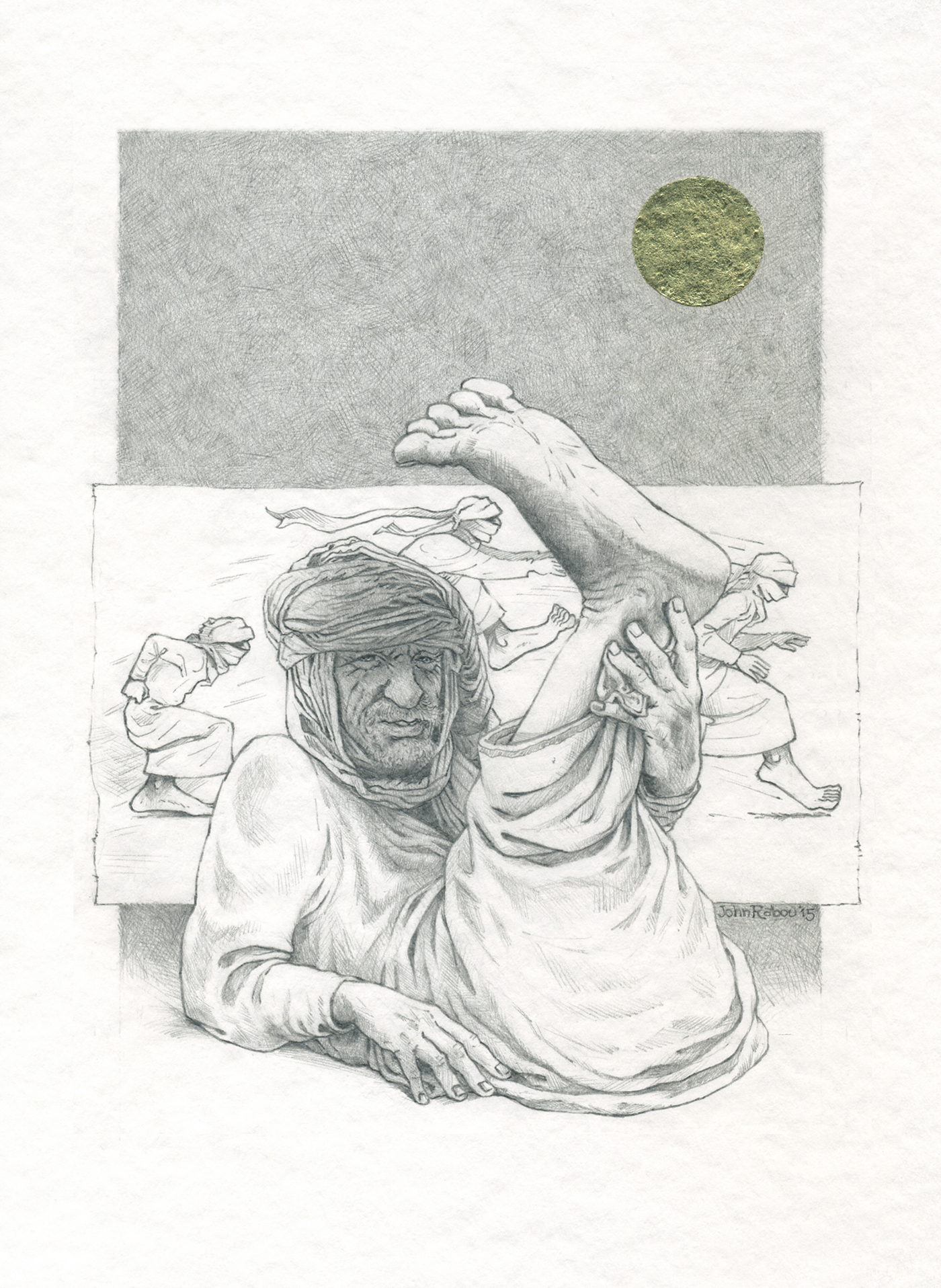
August 19th 2015
While trying some thumbs for the chapter-endings for the various creatures of this project - in this case the Minotaur - I somehow was grasped by this one. In particular because of its bestial, gorilla-like pose, I think.

I decided to make a second illustration of the Minotaur, based on this sketch. Also because I now had the opportunity to tell somewhat more of the story behind this creature.
After Theseus had slain the Minotaur, he returned to Athens together with Ariadne, whom he had promised to marry as soon as they arrived back home. But through the gods he was forced to leave Ariadne behind on an uninhabited island. Heartbroken by this event Theseus forgot his promise to his father, king Aigeus, to enter the port with white sails if he had been succesfull in defeating the Minotaur. Aigeus, who had been watching for his sons return day in day out in anxiety, at last saw his ship appearing on the horizon...but with black sails. In despair he thrusted himself from the high walls of the city into the sea. From that day on this sea is called the Aegean Sea.

When I showed Ingrid (my author) the result, she replied that she easily would dare to stroke its muzzle. She also thought it was a pitty that there was no reference to the labirinth in this second version.
I disagreed about his sweet appearance, because I think he looks quite fierce, but she was right about the labirinth.
So I made one separately and photoshopped it in place afterwards.

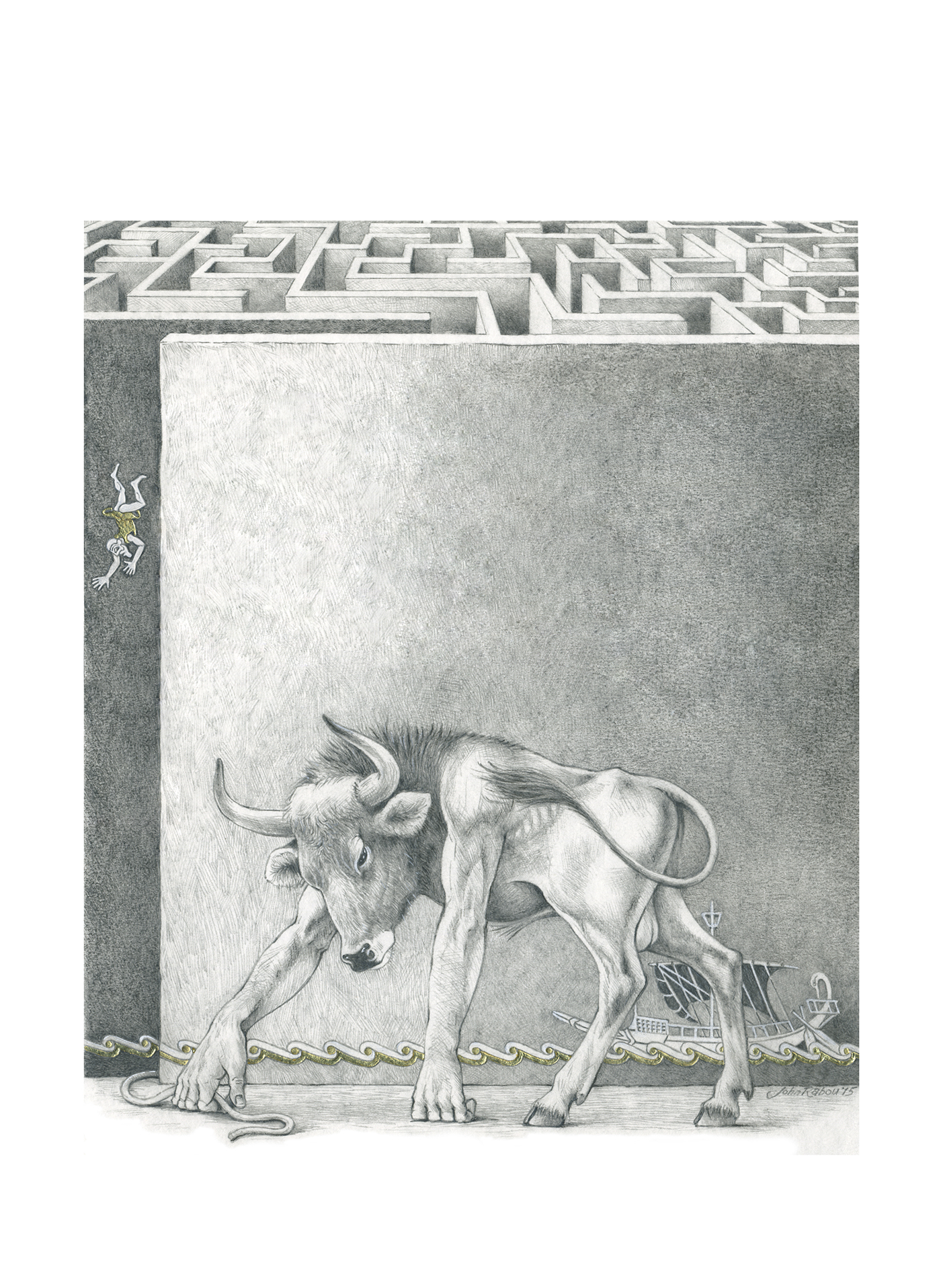
"Het hoekje om"
Just for the fun of it I also made a b/w version in Photoshop.
Not sure yet if and/or how I'm going to use this one. But I quite like it.
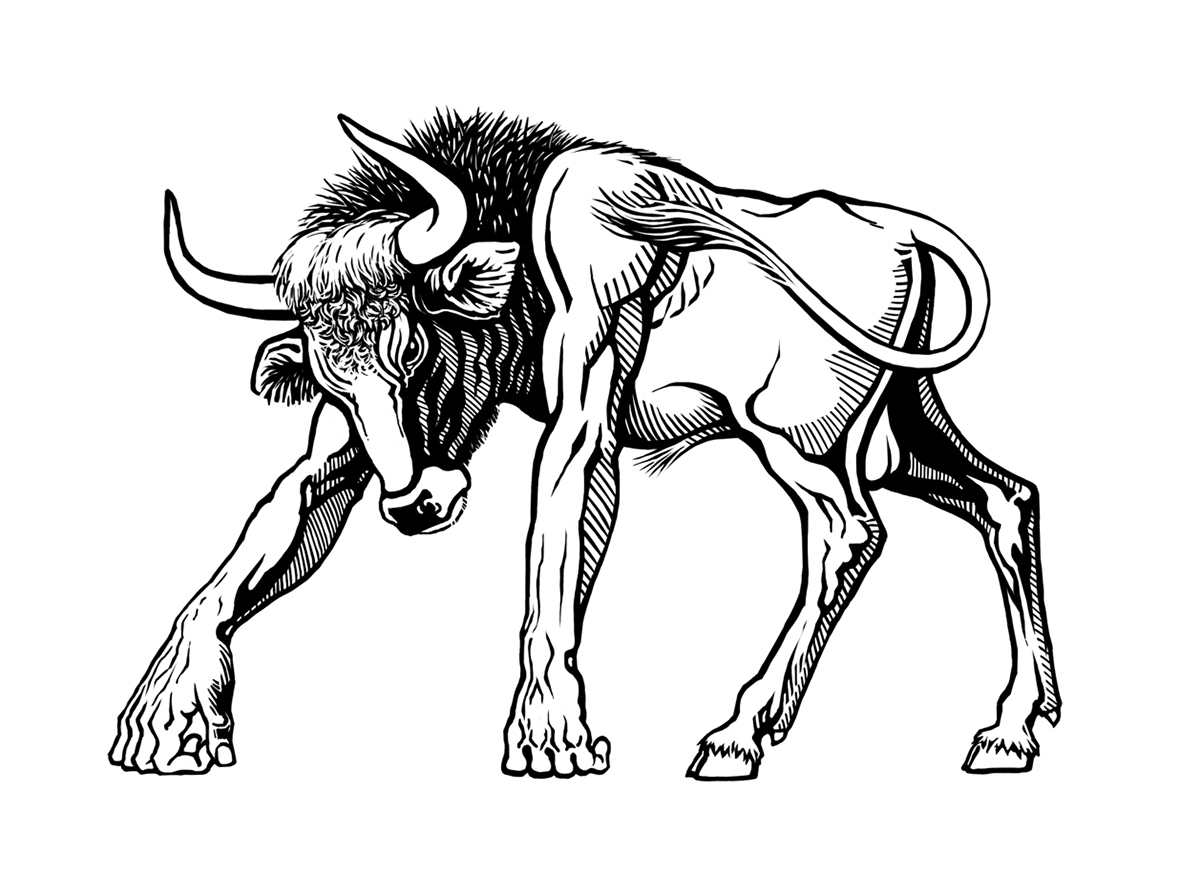
Next topic is the satyr.
For now I can only show some old studies. The first two were done on location in Florence in Italy in 1991 while on holiday.
The others are details of a larger experimental study done in my studio somewhere during the early nineties.
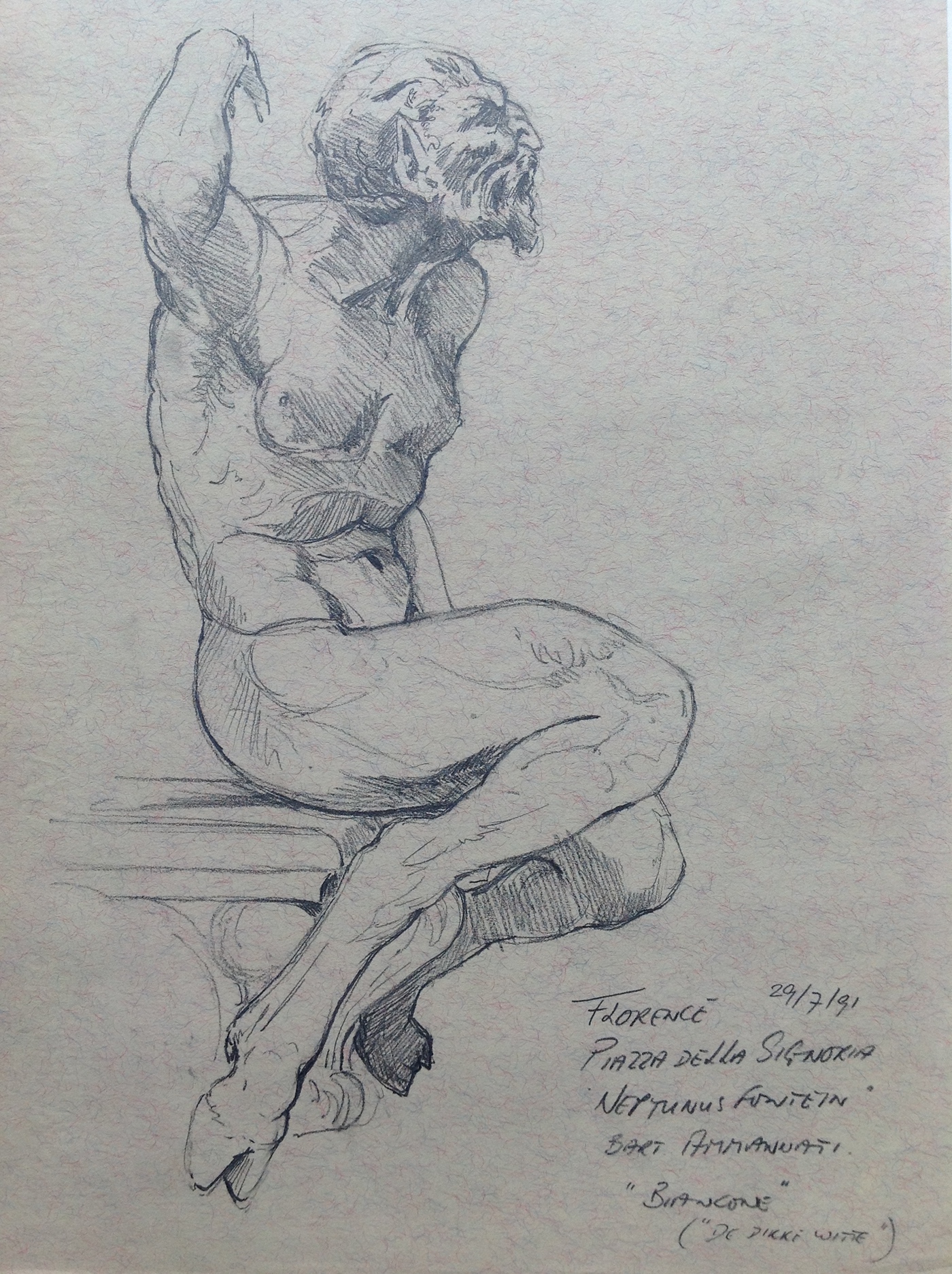

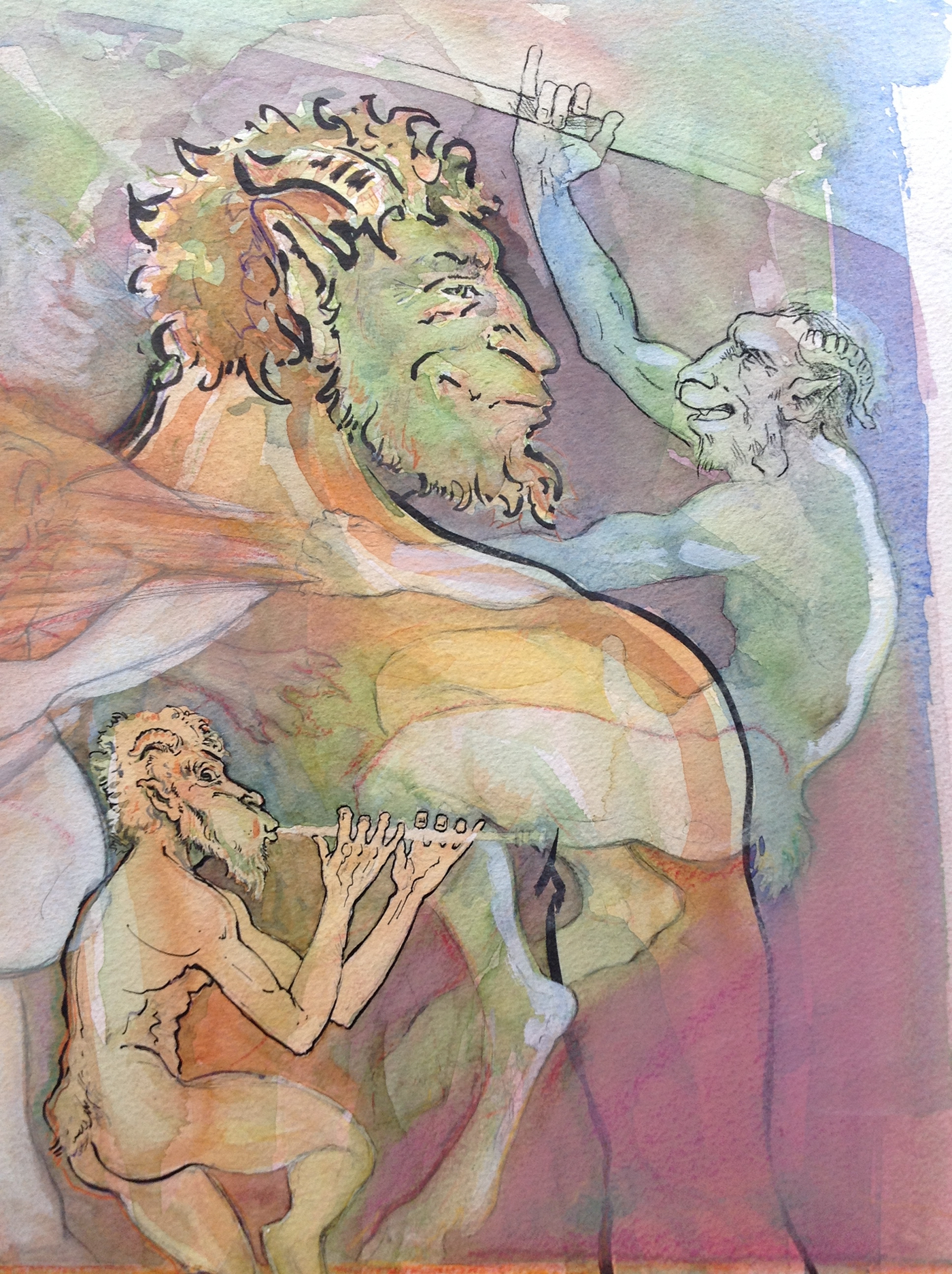
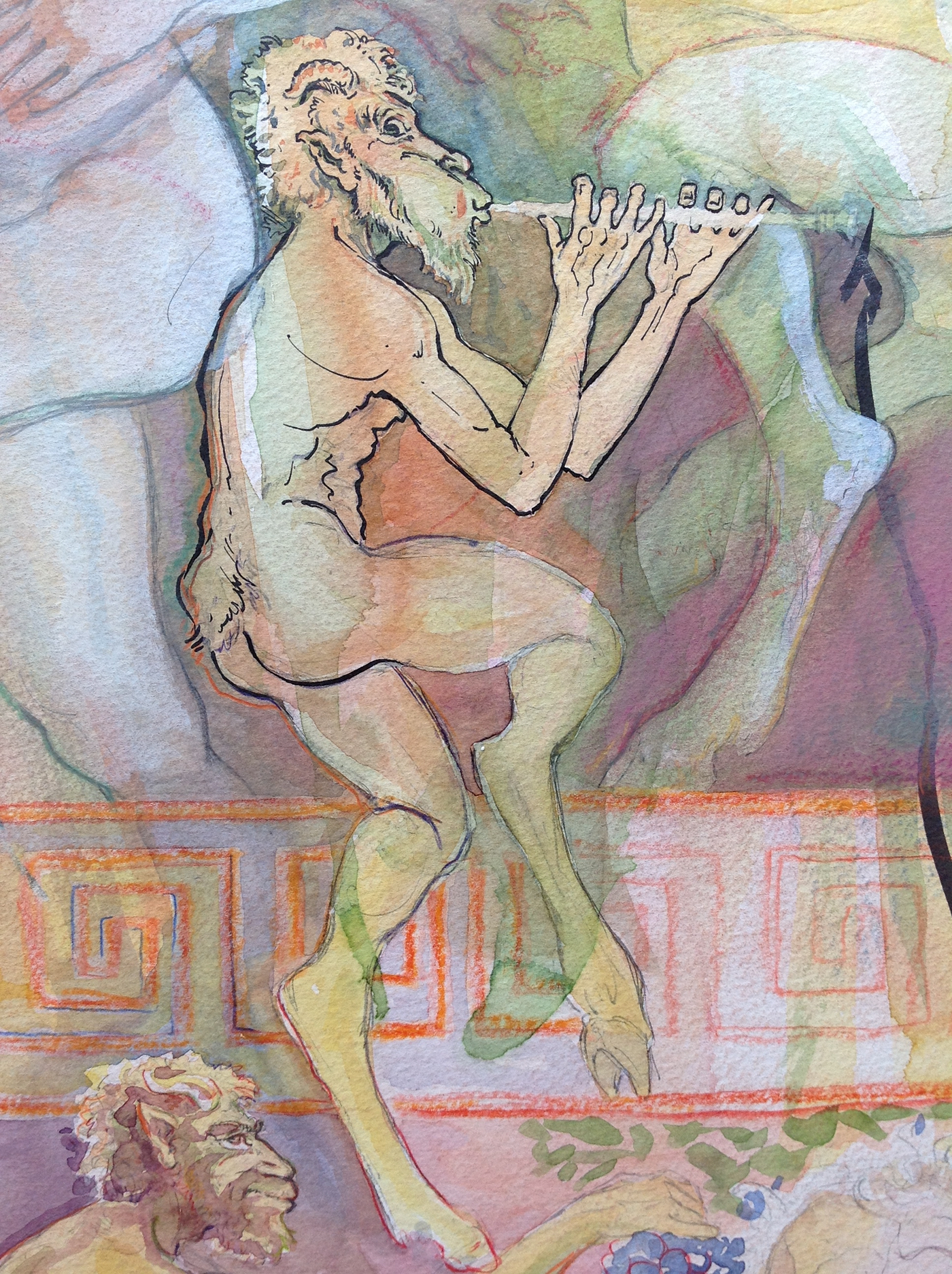

Octobre 21st 2015
The satyr, final art.

"Even uitblazen"
Antipedes-antipoden, final art.

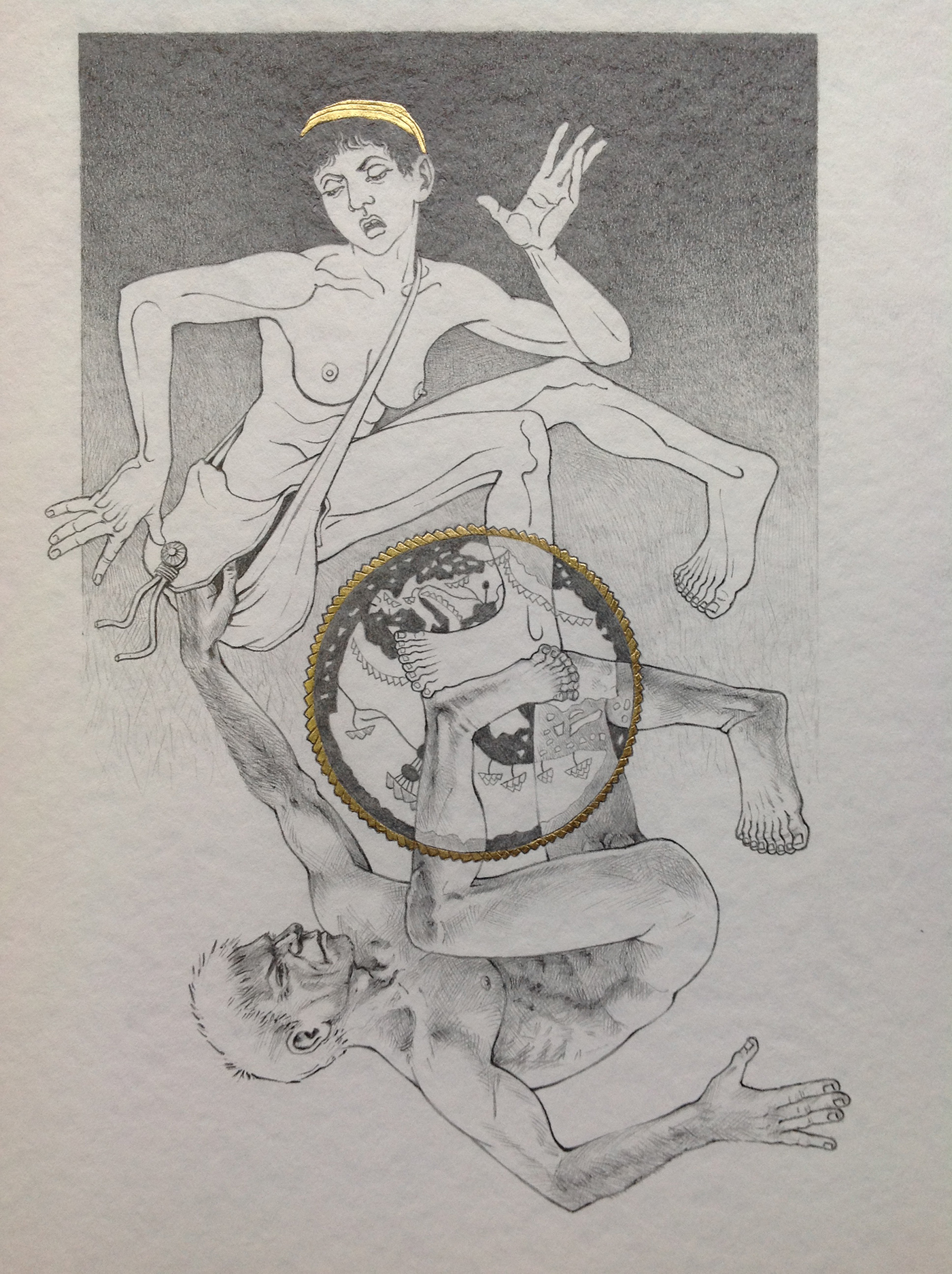
The sea-knight, work in progress.


November 5th, 2015
The sea-knight, final art.
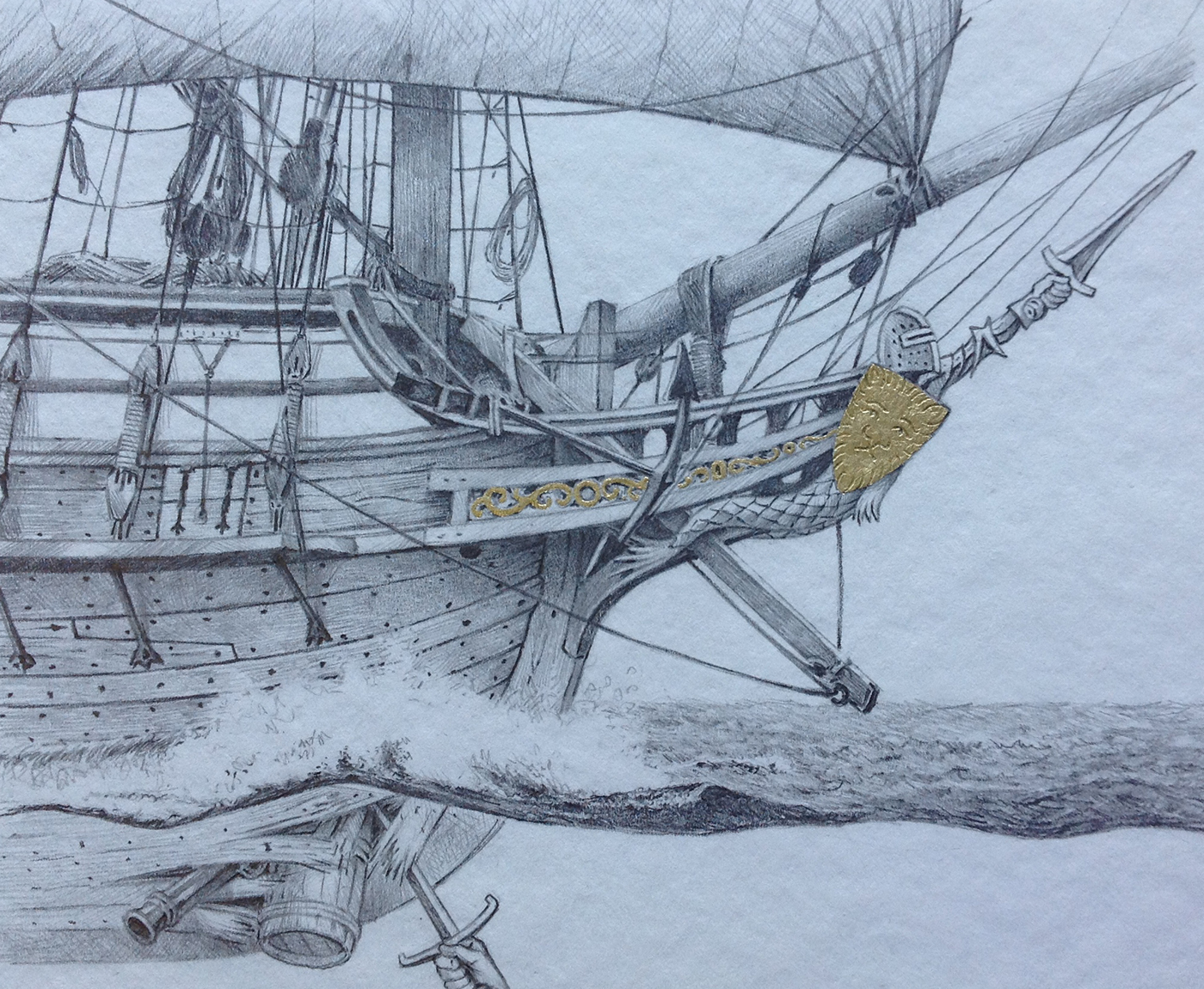
sea-knight detail
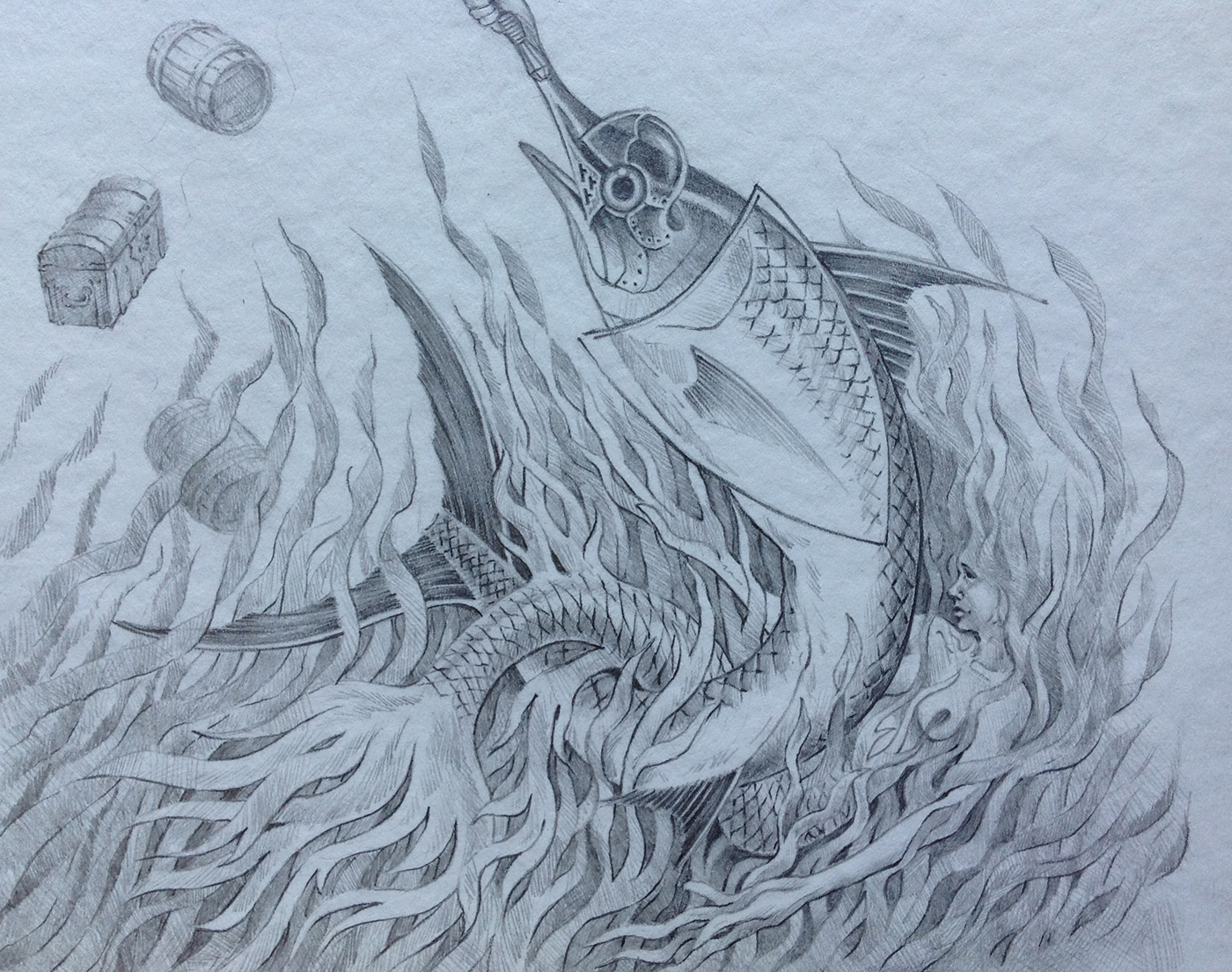
Sea-knight detail

November 17th, 2015
Three "gracious" graiae, from sketch to final art, including a timelapse.

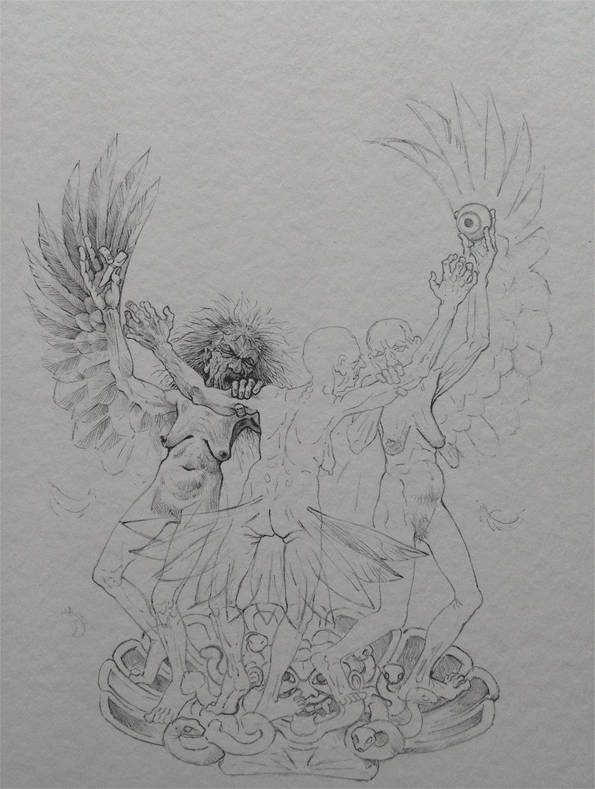

February 9th, 2016
Midas, from sketch to final art, including a time-lapse



February 22nd, 2016
In Greek and roman mythology the Harpies were spirits of sudden stormy winds and swift robbers.
They were depicted as part woman and part bird.
First some studies and sketches, followed by details of the final art and last the final image.



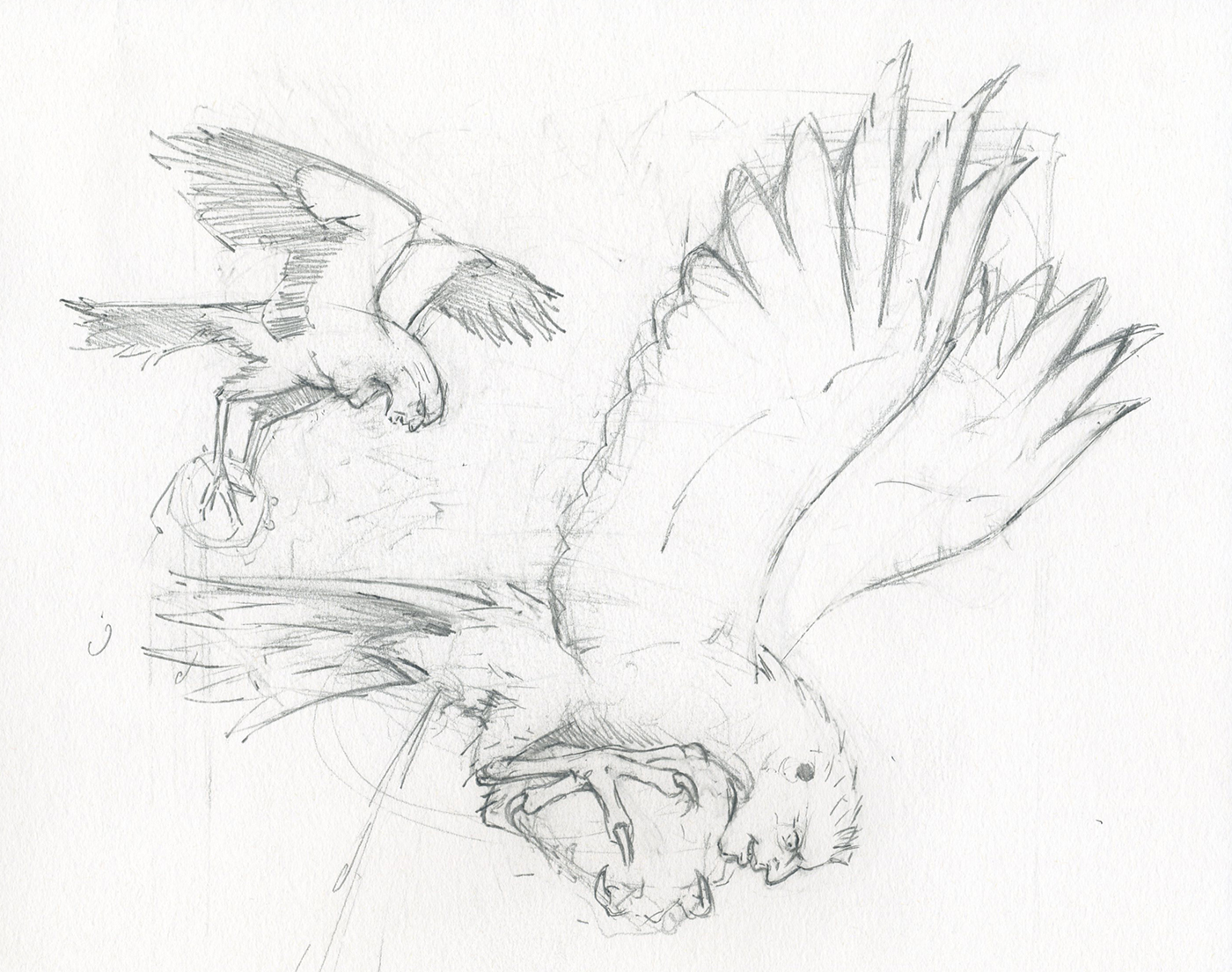



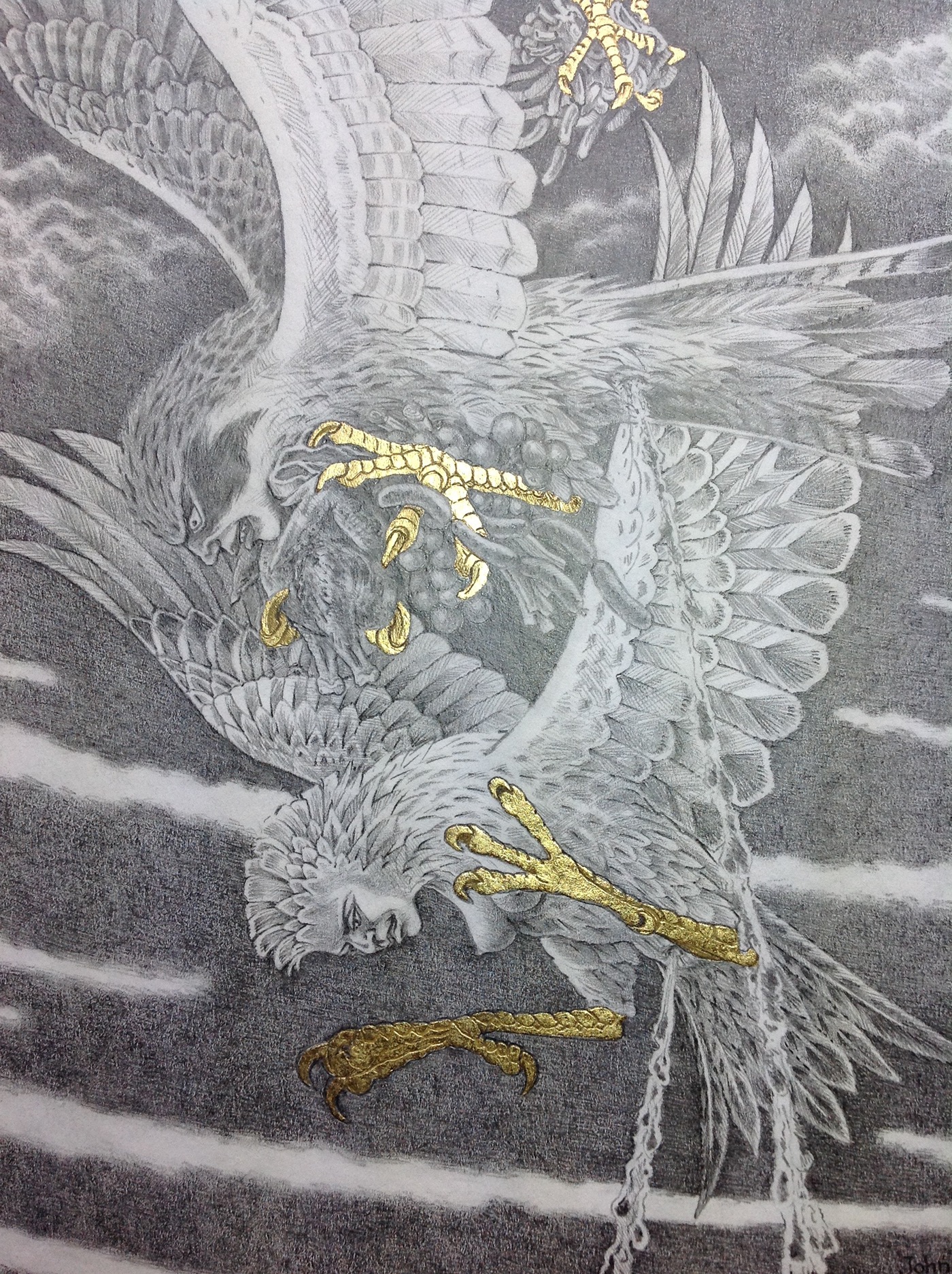

March 7th, 2016
This one is an old study (early nineties of the last century) of a cyclops. More in particular of Polyphemos blinded by Odysseus and his companions. You can read all about it in the Odyssey of Homer.
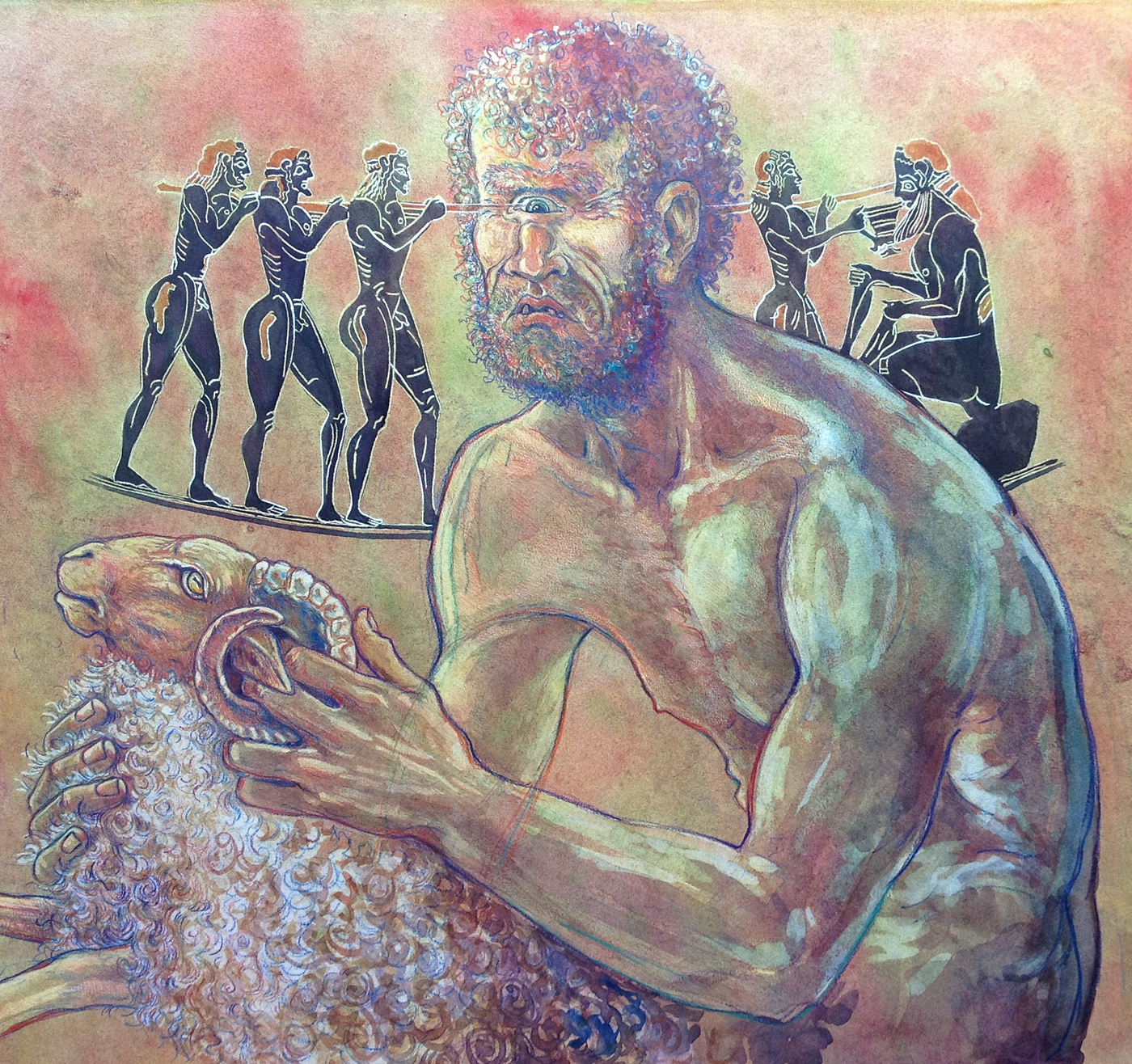
Polyphemus. Watercolour, coloured pencil, east-indian ink.
This new one depicts the same episode in combination with several other aspects of the Giants (Gigantes).
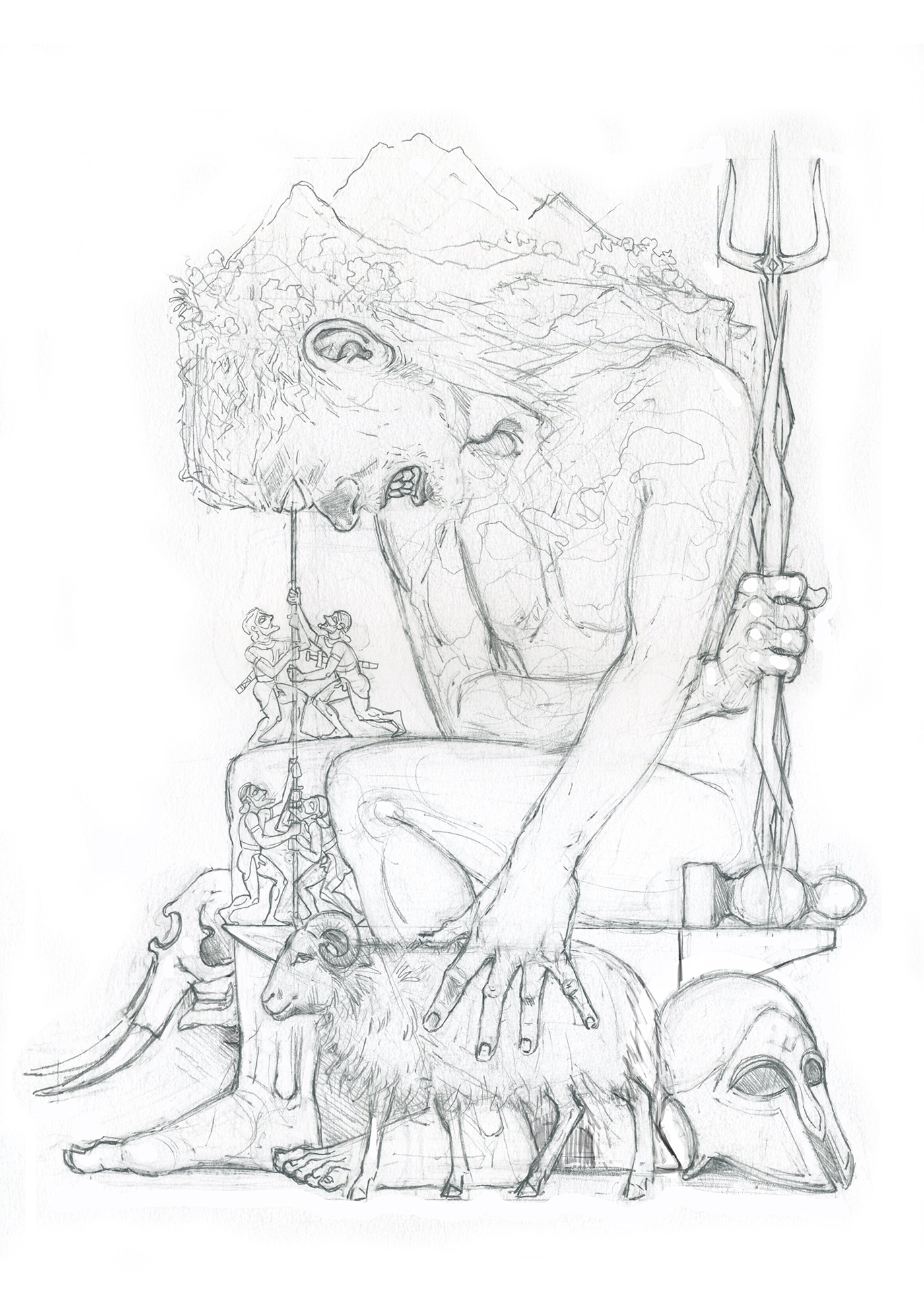
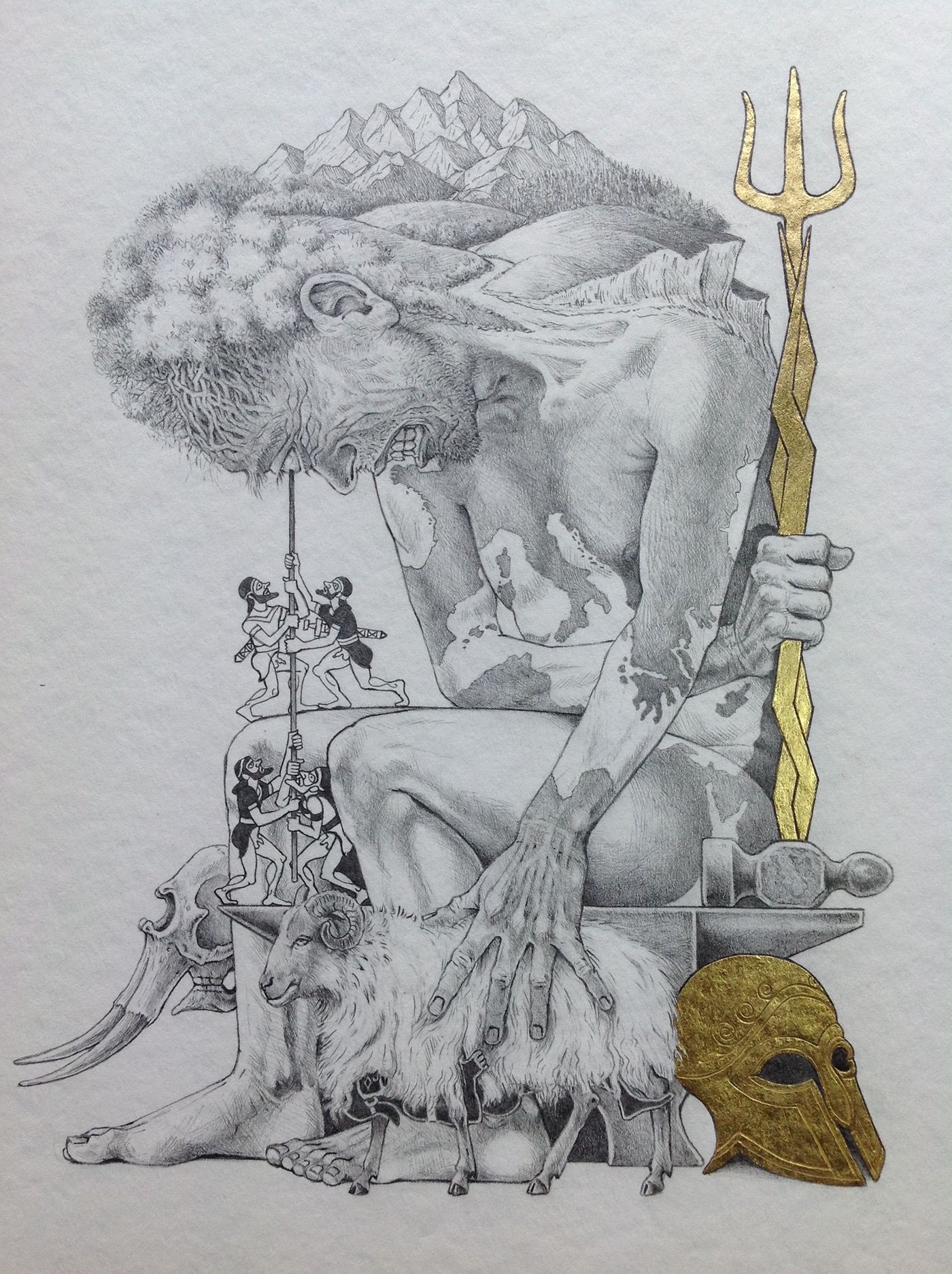
March 11th, 2016
This next one is a rather peculiar creature. Somewhat like the Skiapod I posted earlier.
In medieaval times people believed that the Blemmiae lived on islands at the far edges of the world, beyond the vast empire of the legandary Prester John.
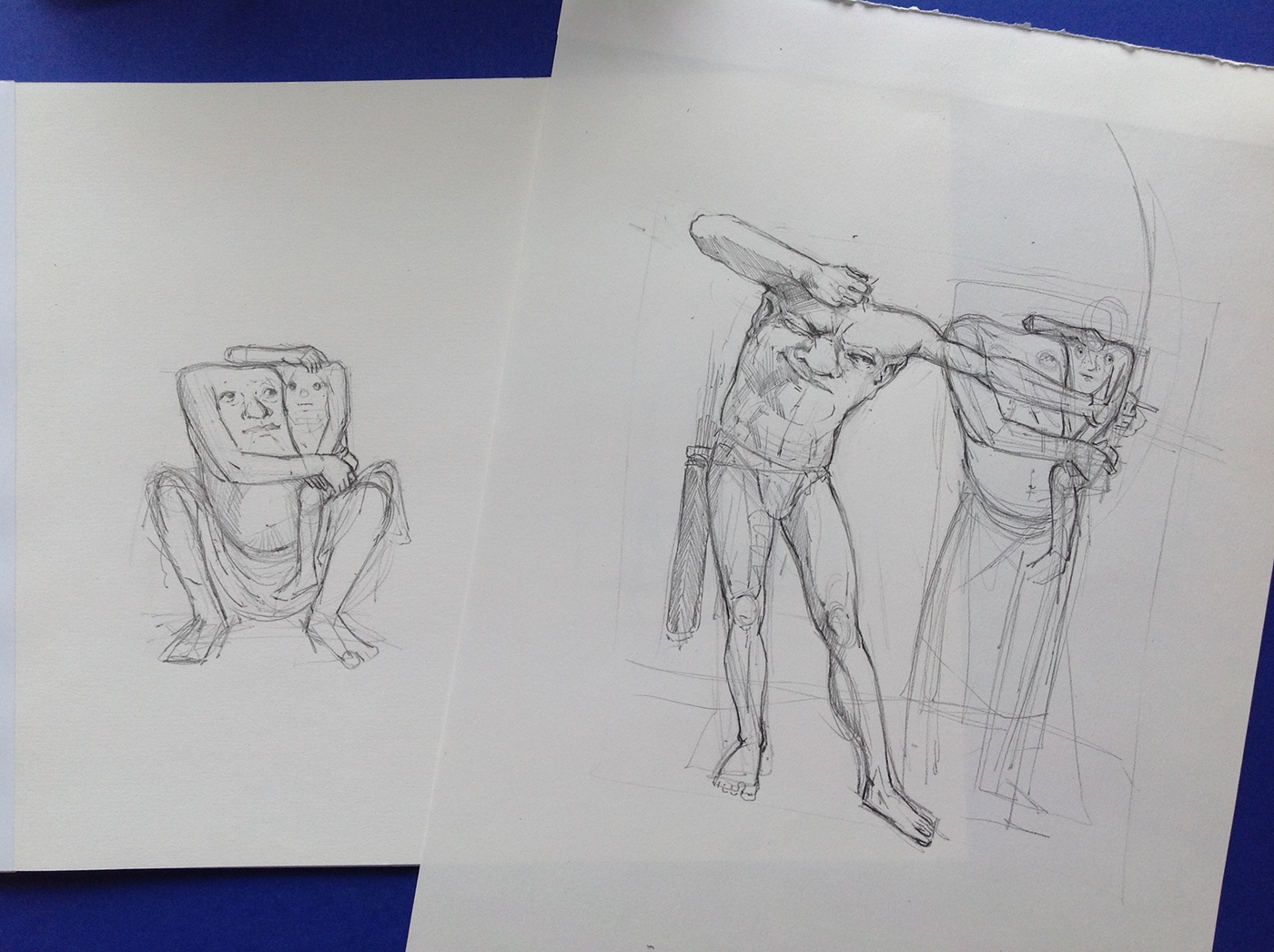

On second thoughts my first attempt looked a bit too much like a family-snapshot.
I had a more savage picture in my mind and in the accompanying text Ingrid compares his features with a ferocious dog, so I decided to do another one.
I think this second one meets my expectations much more than the first one.
I had a more savage picture in my mind and in the accompanying text Ingrid compares his features with a ferocious dog, so I decided to do another one.
I think this second one meets my expectations much more than the first one.
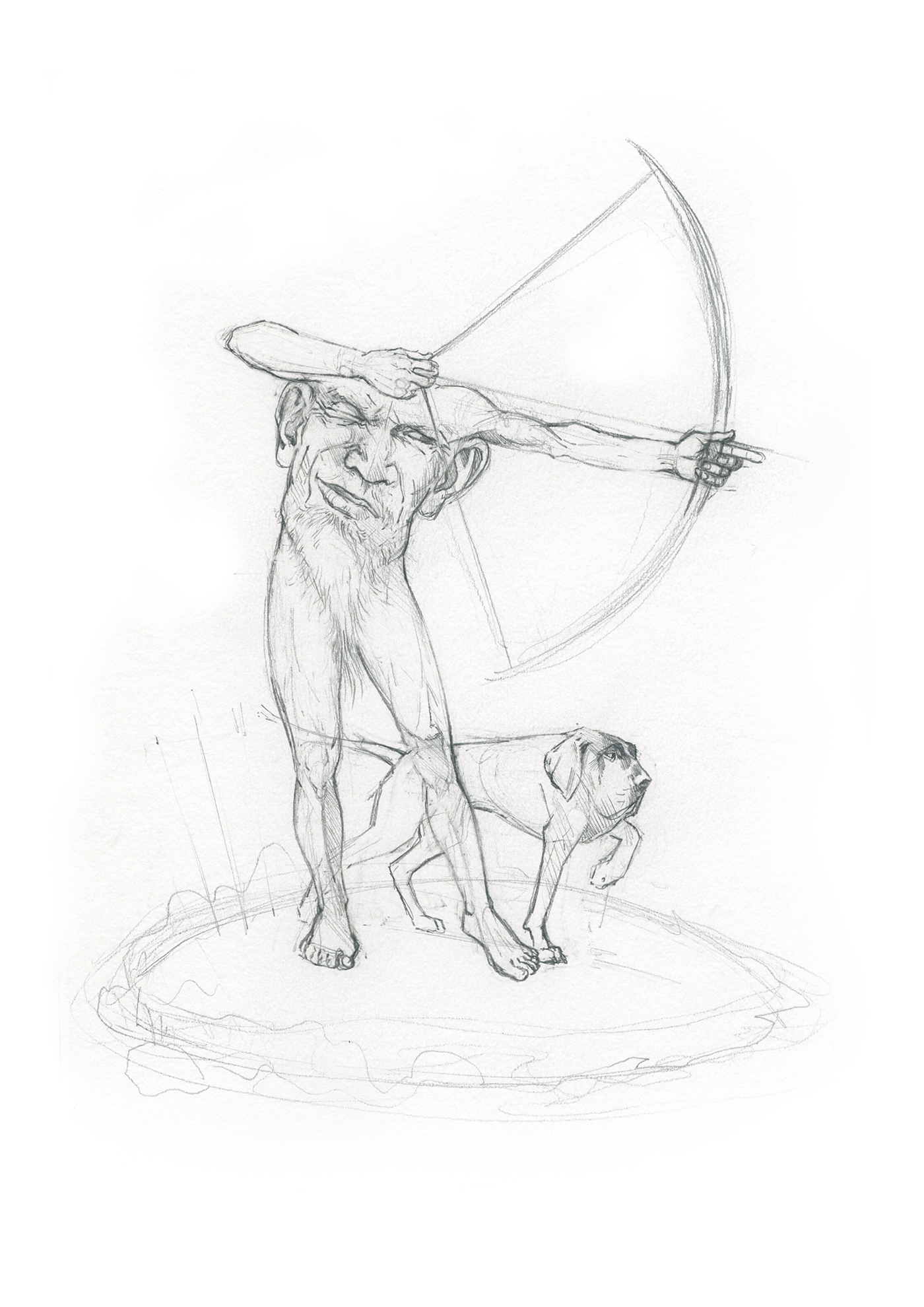
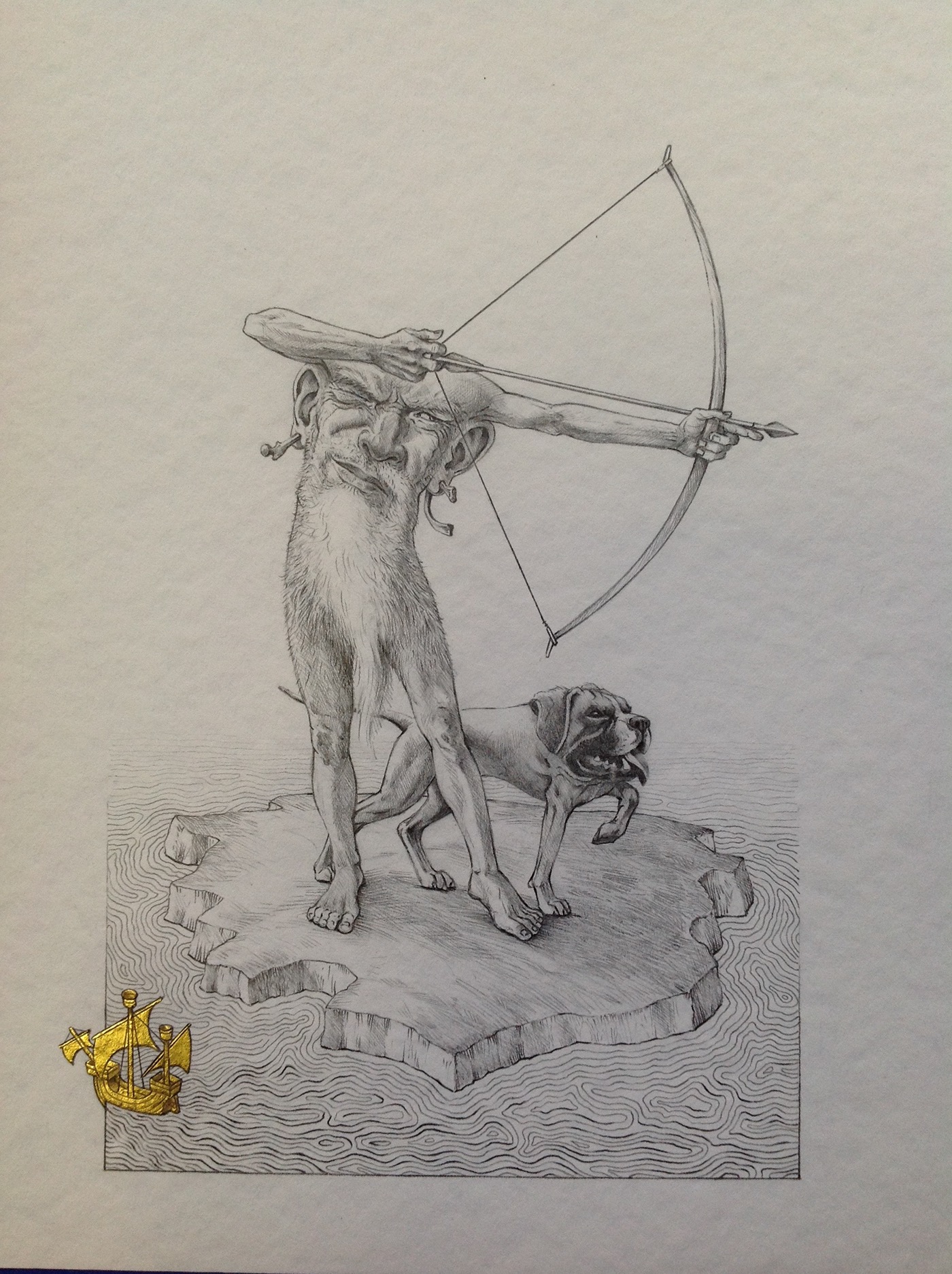
June 2016
The centaurs.
Ovid refers to them in his Metamorphoses as "sons of the clouds".

Wolkenzonen Final art
June 30th 2016
In the early Middle Ages Isidore of Seville described the Panotti as a "Miracle People" living in the cold north of the then known world. And even in ancient times Pliny already mentioned them in his writings.
But apart from these sources they were also depicted - together with numerous other wondrous creatures - on the famous mappa mundi of Hereford from around AD 1300.
The Panotti were described as having enormous ears with which they could cover their further naked body against the cold. And this is about all that is known about them.
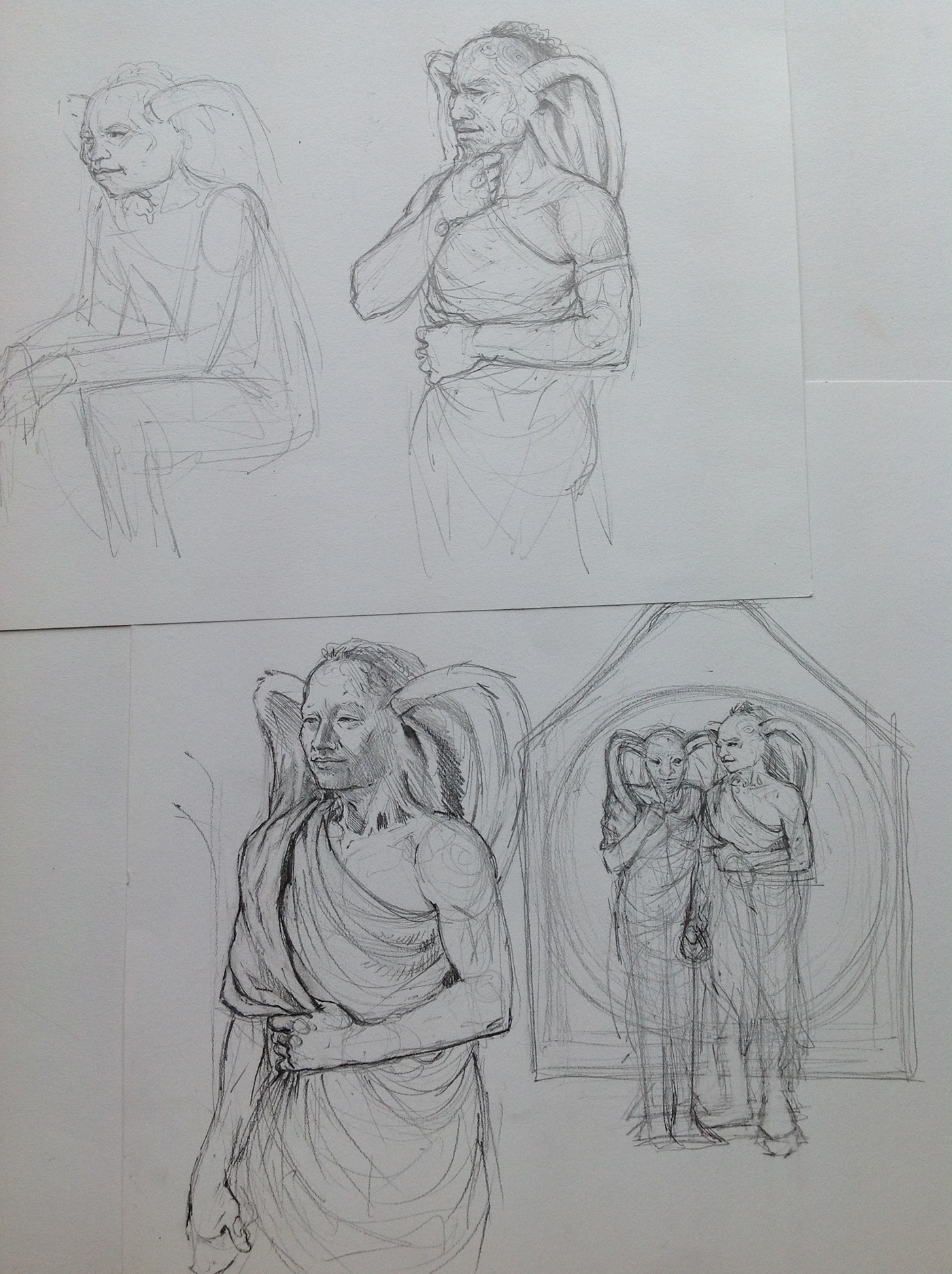



July 20th 2016
According to Ovid Hermaphroditus was kind of a tragic young lad.
He was the son of Hermes and Aphrodite, so there was absolutely nothing wrong with his looks.
And that was exactly what the water nymph Salmacis thought when she first saw him.
Although he wasn't at all interested, she was determined to seduce the well shaped young man.
So she lured him into her christalclear well and what happened next you can read all about in the
Metamorphoses by Ovid.
Or next year in my own book of course.
Here are a few process-sketches.
At first I made a variation of the Homo Vitruvius by Da Vinci to depict the hermaphrodite, but it didn't quite meet my expectations.
So I decided to use a far less famous picture from the 15th century Liber Chronicarum by Hartmann Schedel instead.
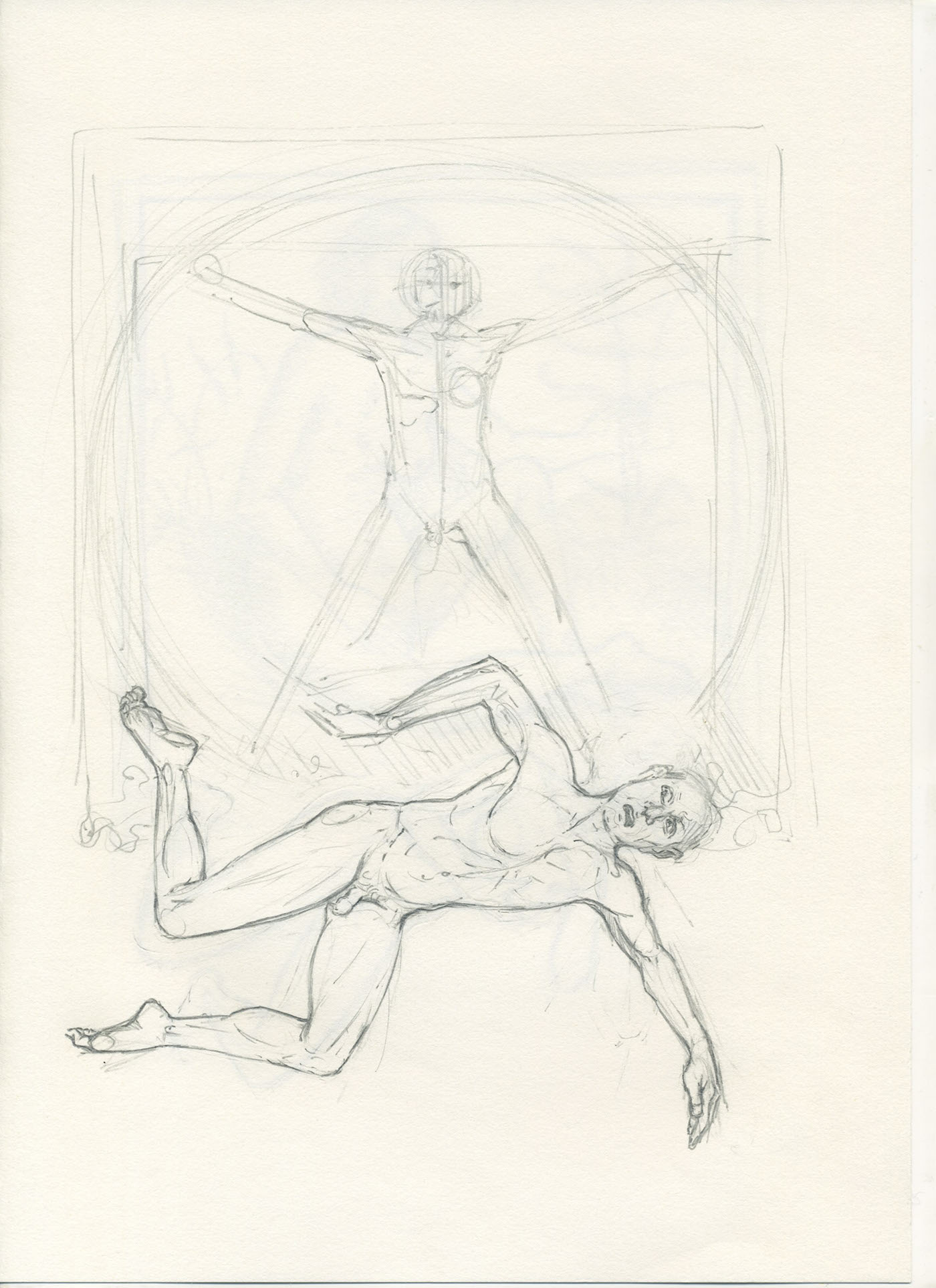

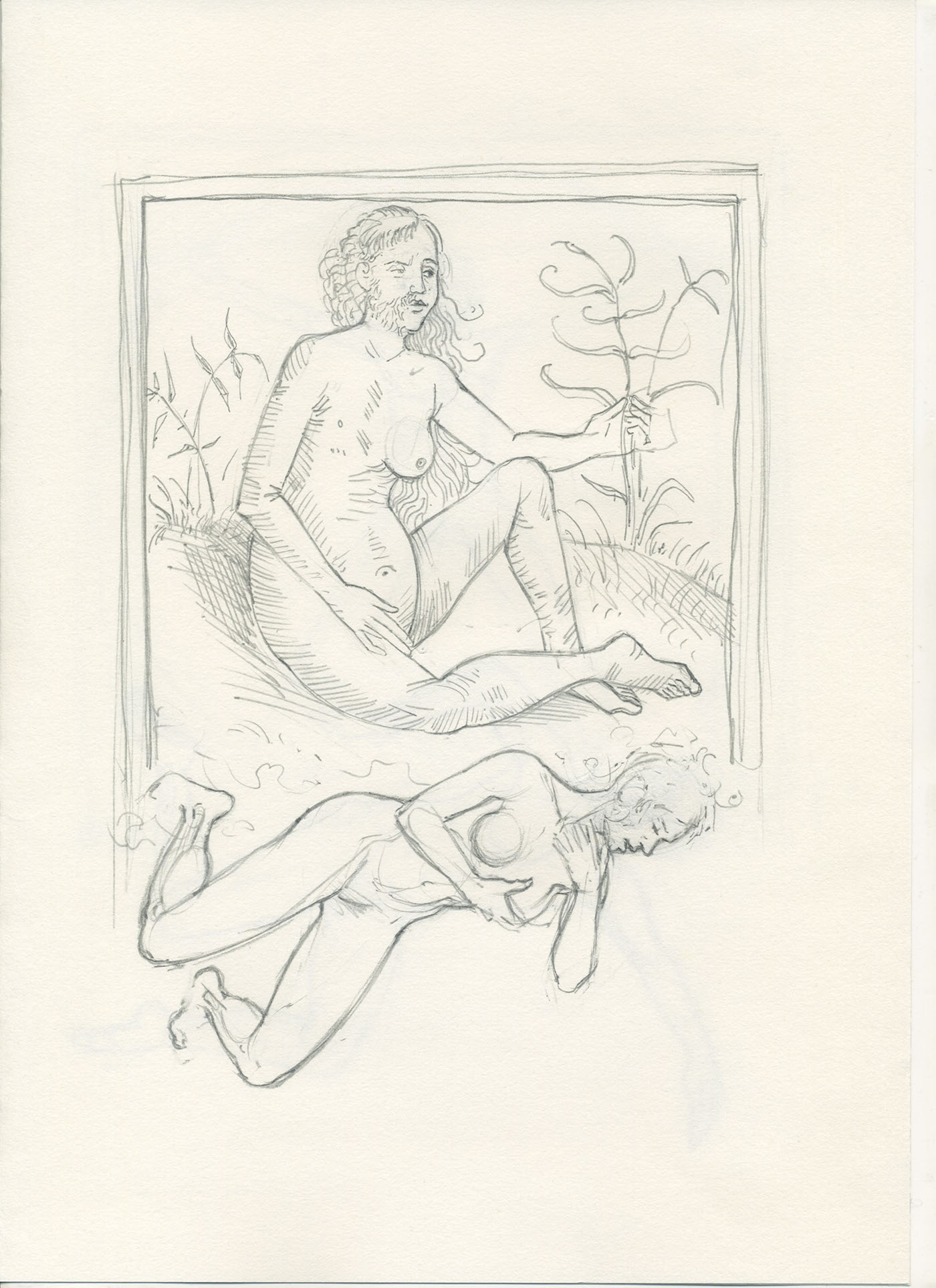

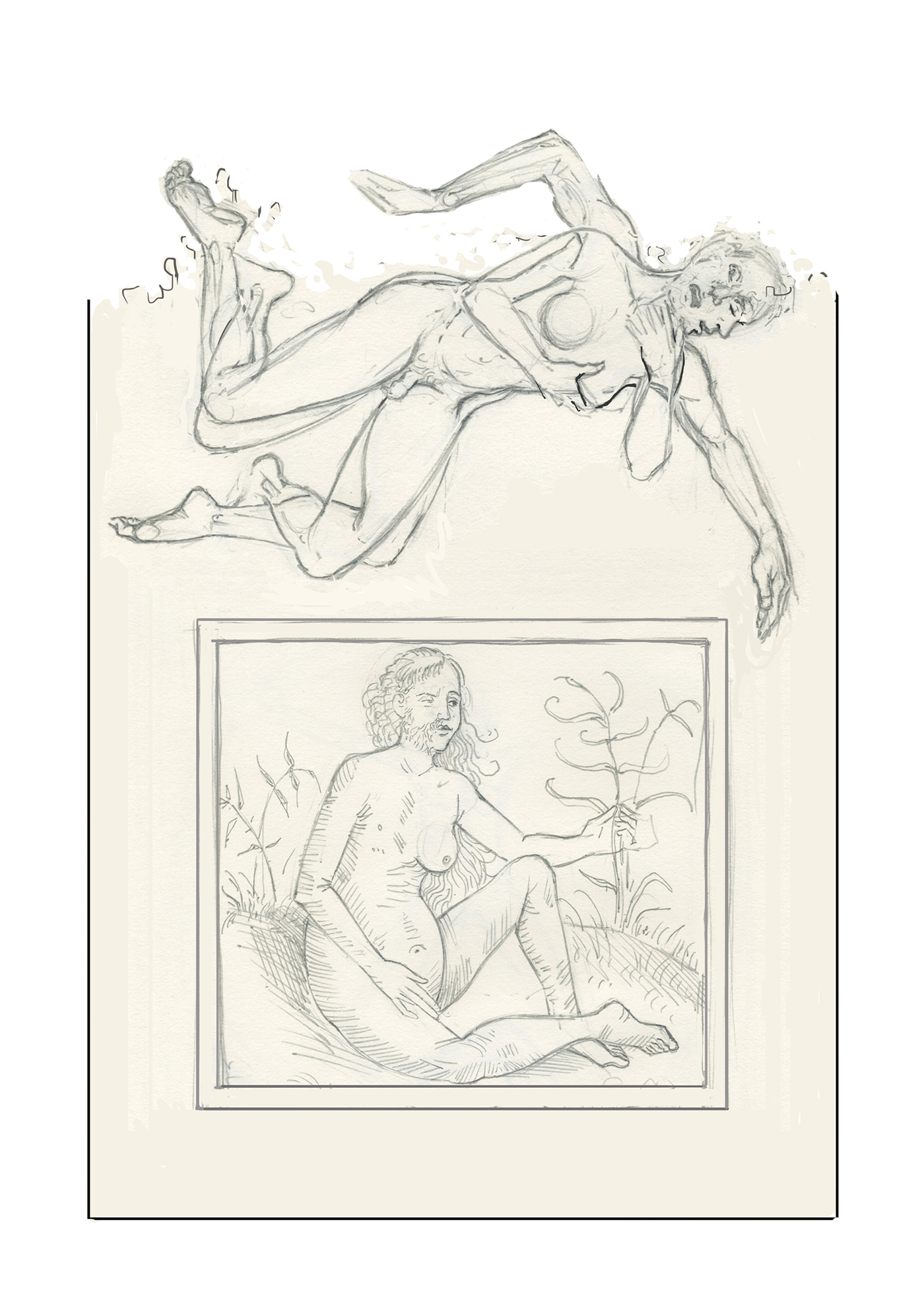

Final concept-sketch
Hermaphroditus, final art plus details.
Pencil and gold leaf, 20 x 30 cm.
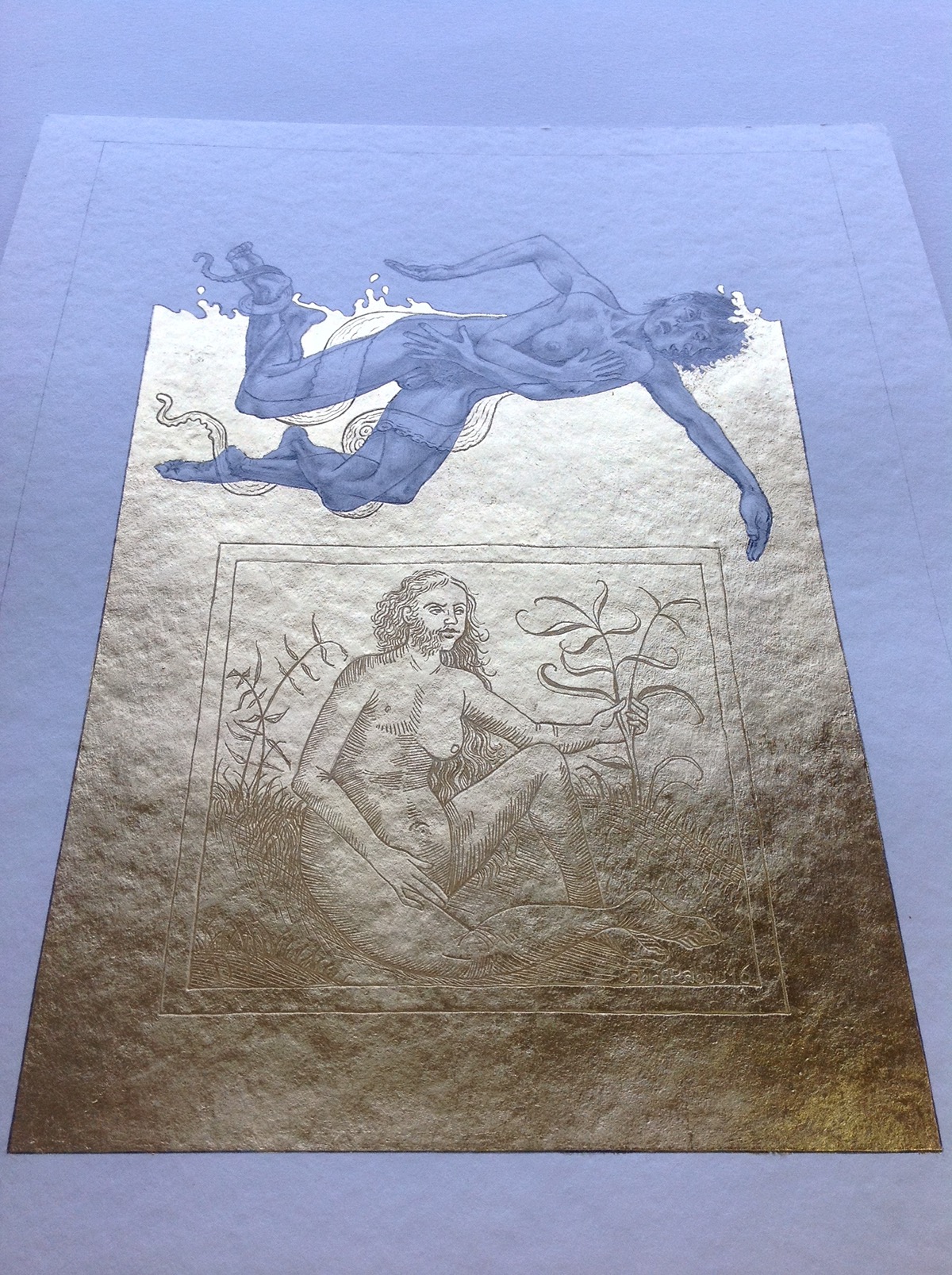



August 29th 2016
About the appearance of the sirens there seems to be some confusion.
According to Homer and Ovid the siren looked like a bird (of prey) with the head of a young woman, whereas in medieval times this creature was mostly described and depicted as a woman with a fishtail, so she looked more like a mermaid. Therefore I decided to depict her both ways at the same time: "The Siren's Song" - Pencil and gold leaf - 31 x 29,7 cm.

"The Siren's Song" 2016
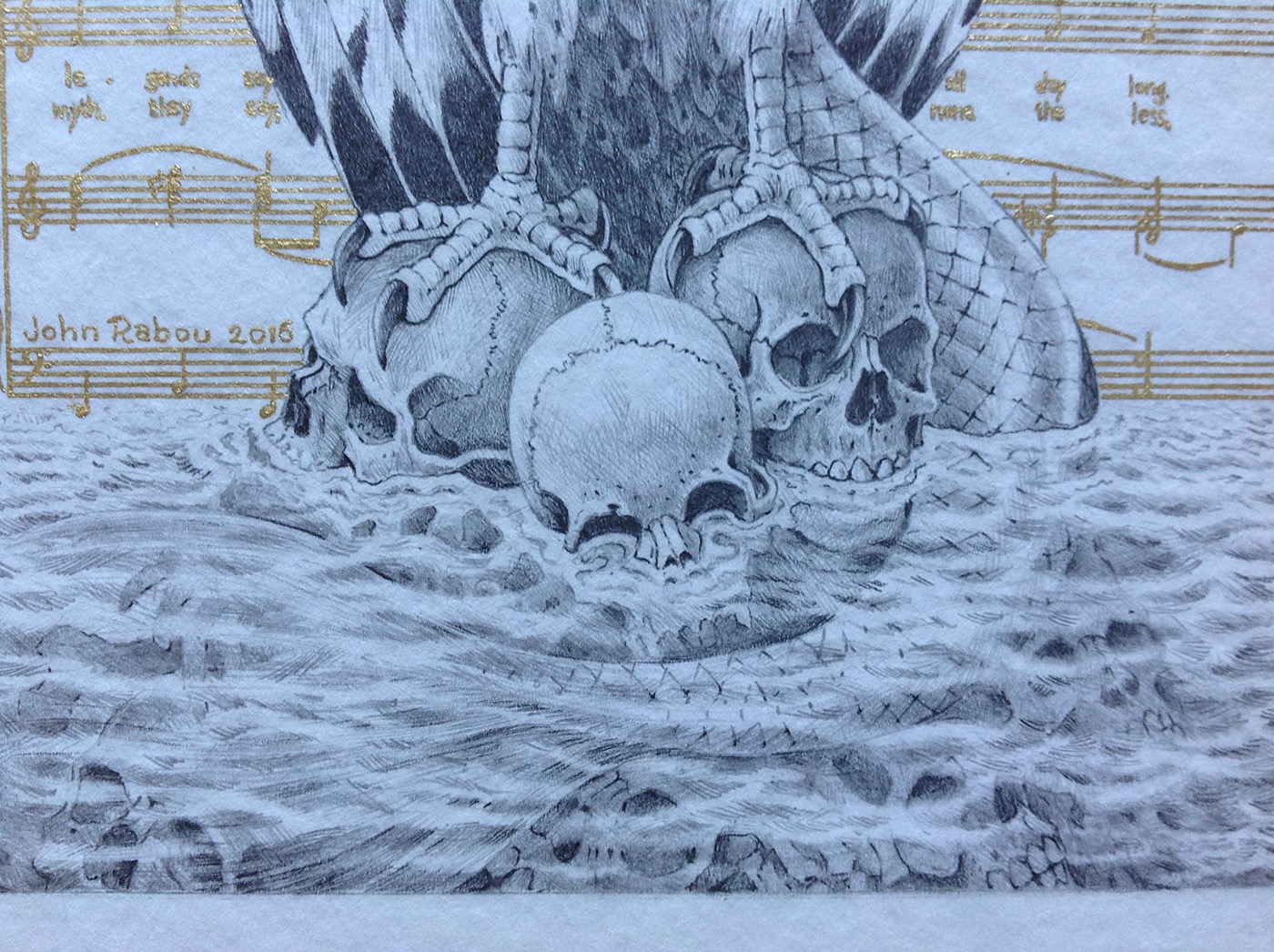
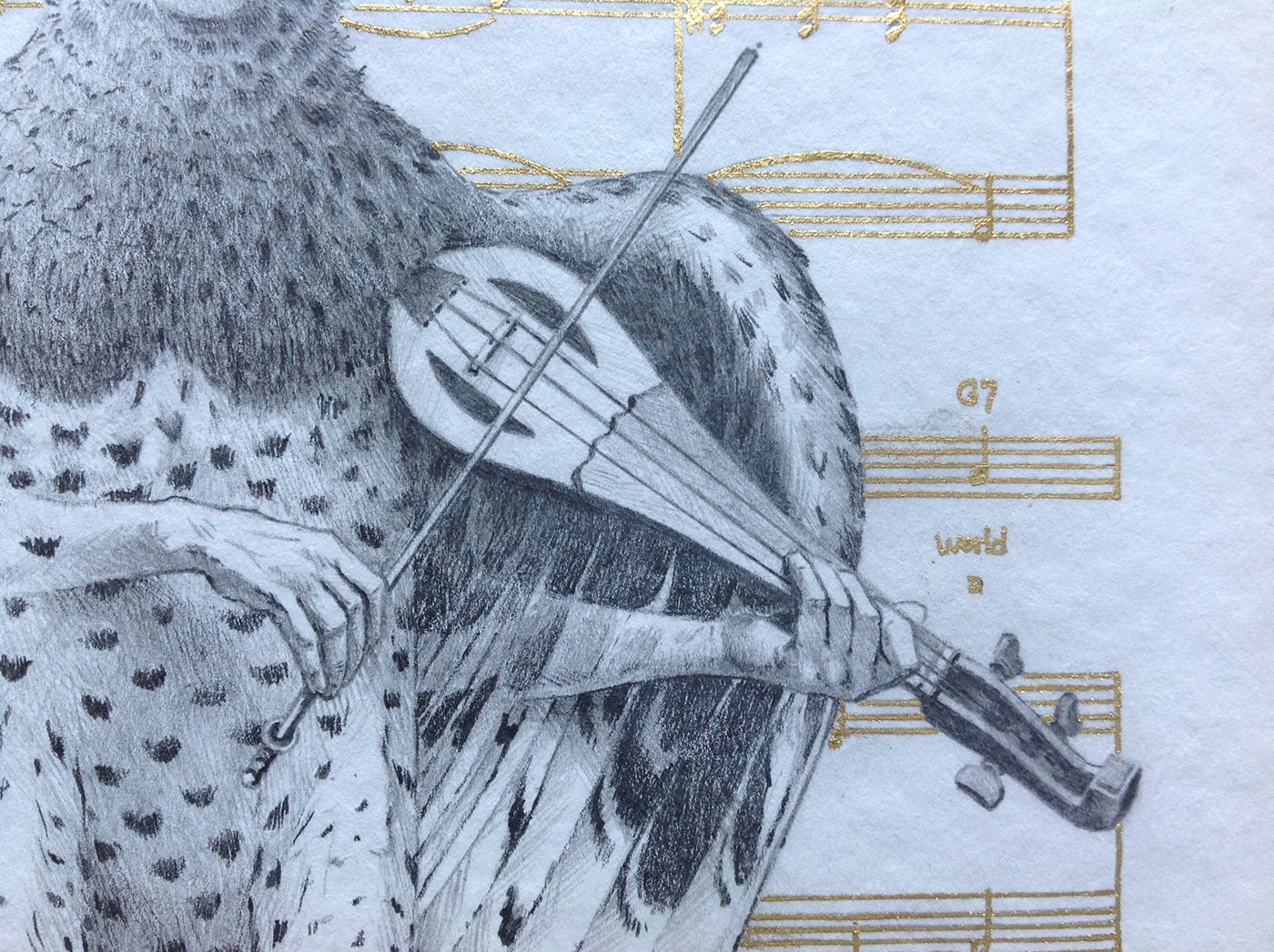

October 7th 2016
Trying incessantly to escape from Apollo's love and lust, in the end the beautiful and virginal nymph Daphne beseeched her father - the rivergod Peneius - to transform her into a laurel tree.
"Oh father! Please, help me! A rivergod has the power, hasn't he? Free me from this body, which made me far to beautiful!"
From Ovid's Metamorphoses, Book I, verse 452-567.
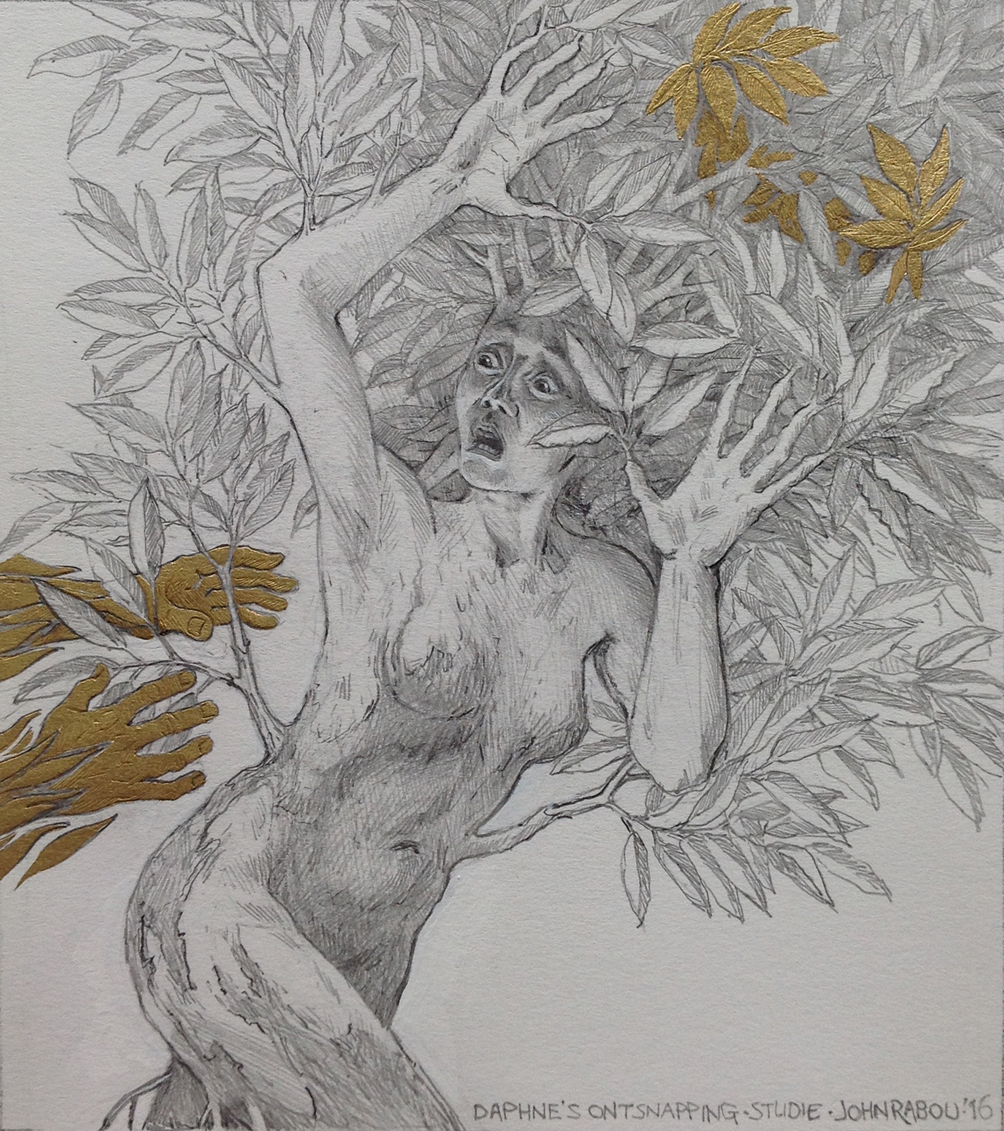
"Daphne's escape" - study. Pencil and gold leaf

"Daphne's escape", detail.

"Daphne's escape", detail
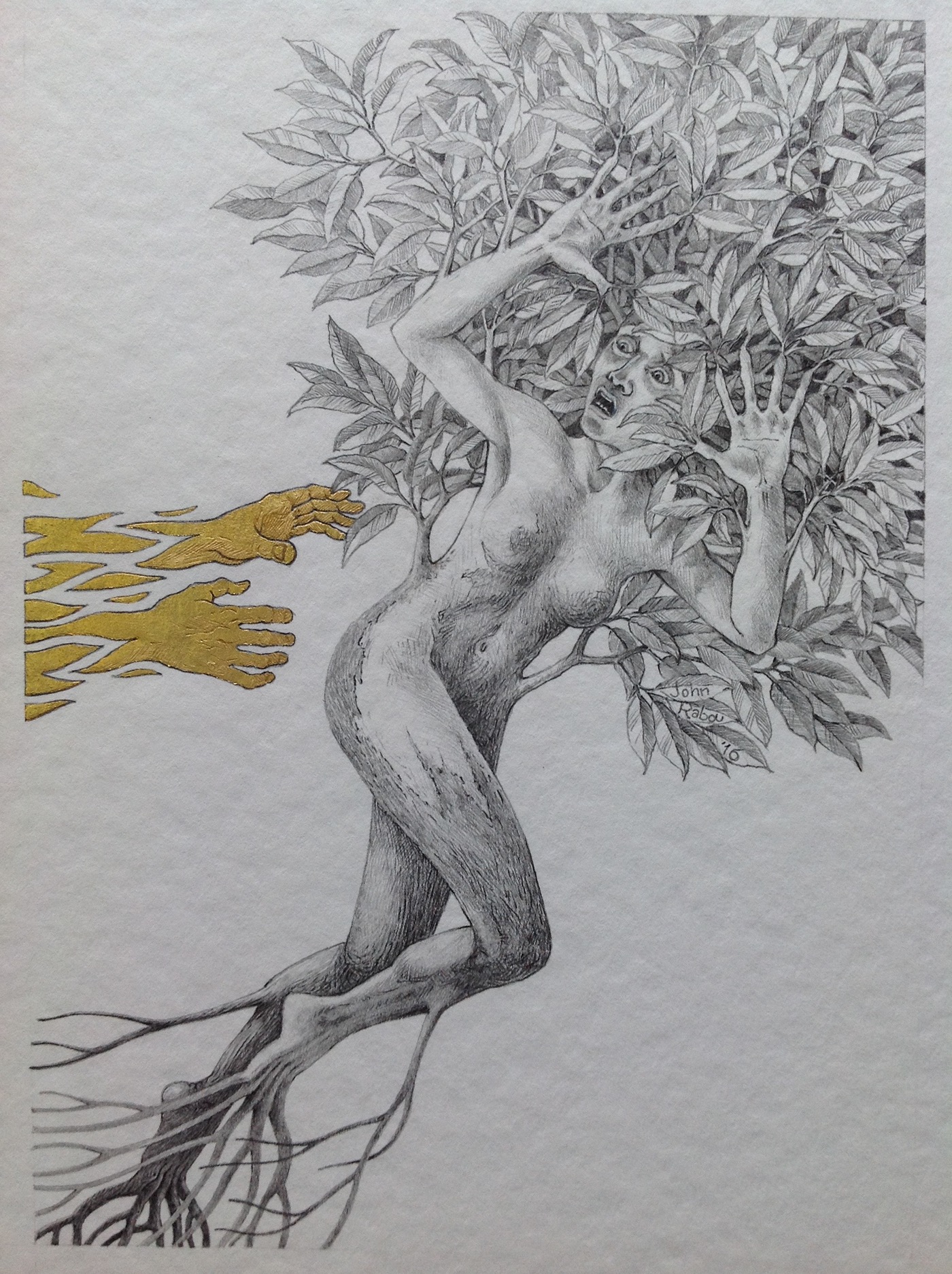
"Daphne's escape", pencil and gold leaf, 16,5 x 23 cm
December 16th, 2016


"Three times around", pencil and gold leaf, 21 x 29,7 cm.
The greek Sphinx lived just outside the borders of Thebes, where she asked innocent passers-by all kinds of insolvable riddles. When they couldn't make an answer, they were done to death by her without any merci.
Until the famous hero Oidipous came by. He solved her riddle, after which she indignantly jumped into her own death.
I'm still in two minds about which version to choose: the free-standing one or the one with the dark background.
I'm inclined to choose for the dark one, because this one is titled: "...and on three at night".

"...and on three at night", pencil and gold leaf, 21 x 29,7 cm

Idem, with (yet) a digital background.
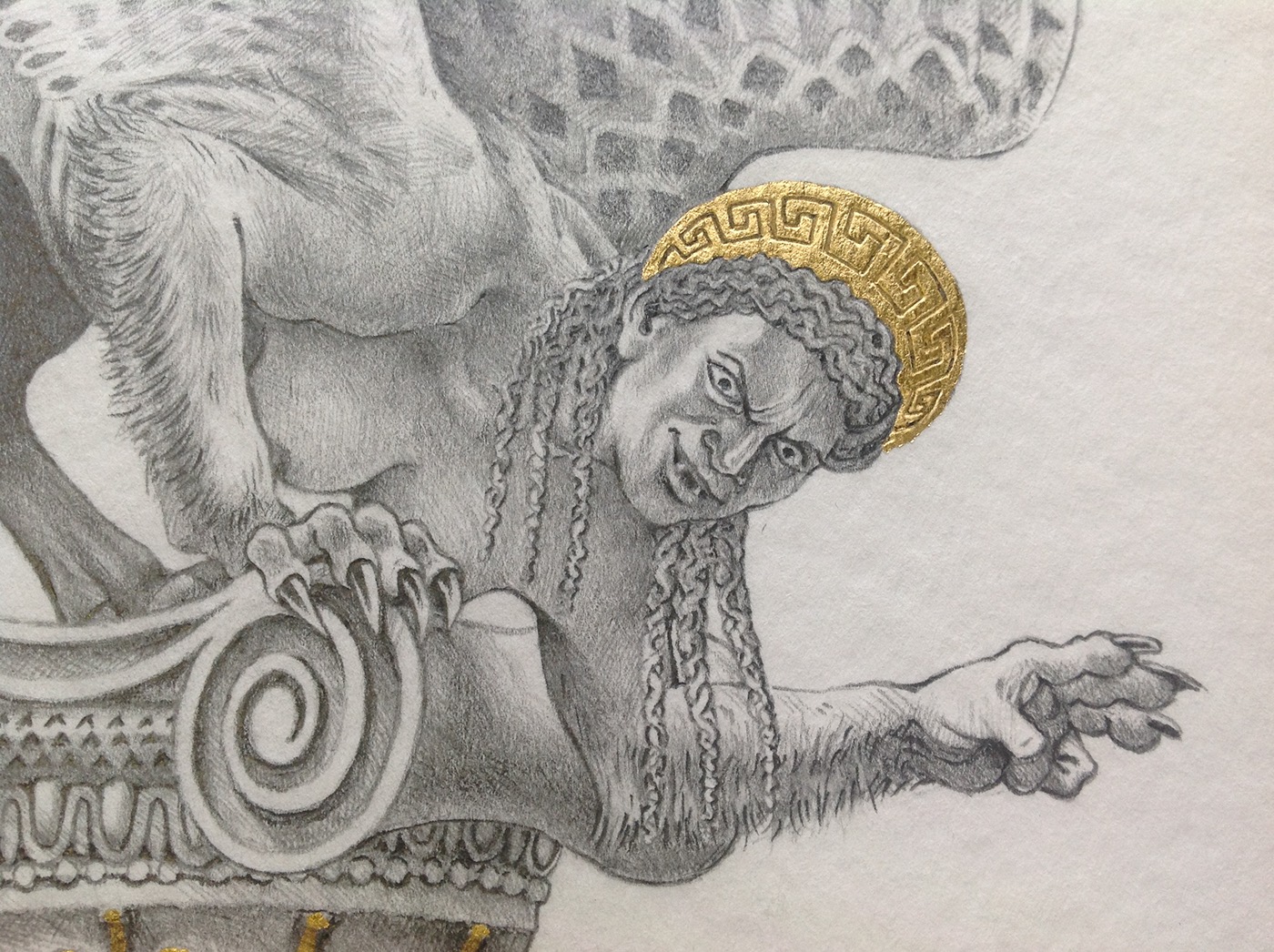

After putting this question on Facebook it became clear to me that the one with the dark background was to be preferred.

December 31st, 2016
In the days of Homer, Herodotus and Pliny the wondrous and tiny people of the Pygmees were living in the mountains of India. They are not to be confused with the Pygmees, who are still living in parts of Africa today.
The pygmees from Antiquity were in constant conflict with the cranes, which continually threatened their crops.
The little warriors only got some rest during a short period of time, when the birds were leaving for their yearly migration.


January 5th, 2017
This lad is quite a peculiar one! Although it is a plant, its roots definitely has human features.
The mandragora - as this plant is called - was already known in ancient times for its medicinal and even magical powers.
But there was one major problem with this plant. When harvested it would scream so horribly, it would kill the harvester instantly.
Therefore a - preferably black - dog was used to do the dirty work. The dog was tied to the plant with a rope and then lured with a piece of meat. At the moment the horridly screaming plant was pulled out of the earth, the dog dropped dead instantly.
In this way the harvester - his ears plugged carefully with bee's wax - could collect the precious plant without loosing his life.
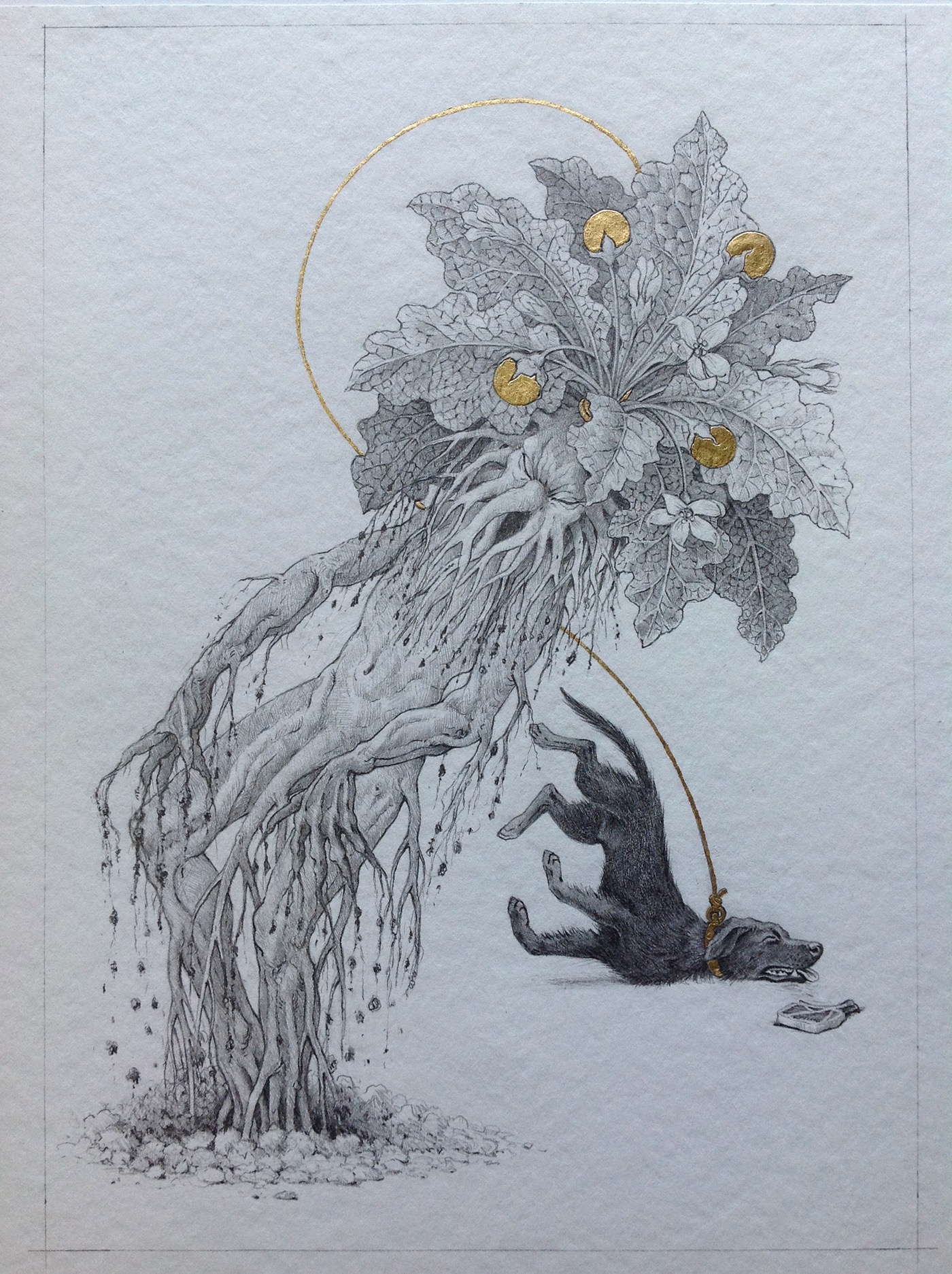
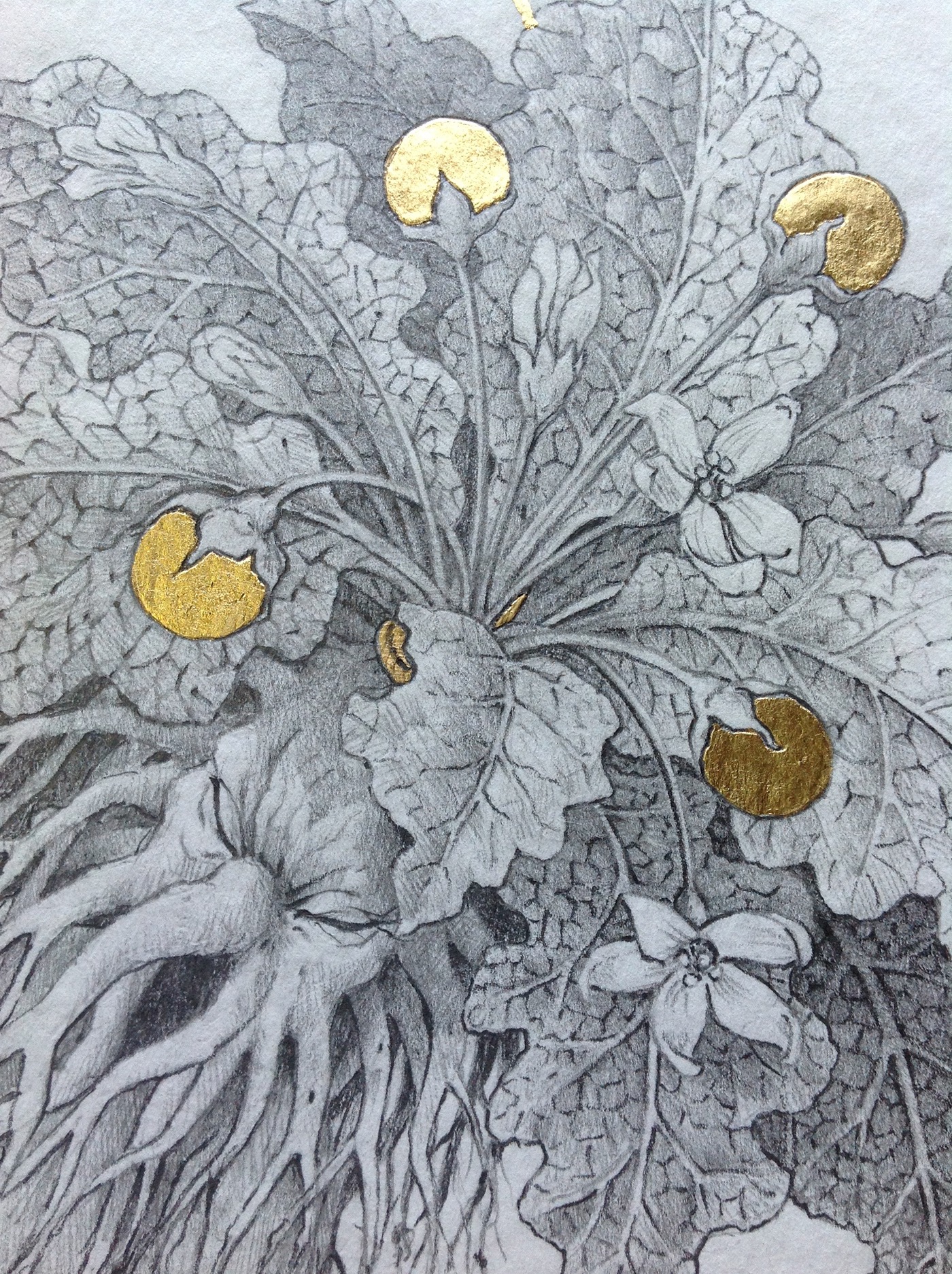

January 17th, 2017
Throughout history in many travel accounts and ship's journals the curious people of the Cynocephali were mentioned regularly, but they were seldom seen. Marco Polo himself though, stated in his book Il Milione that he had seen them on one of his long journeys through Persia, China and India. He situated them on a large island about 1000 miles east of Ceylon.
Apart from the fact that they had dog's heads and were quite barbaric - cannibalistic even - and wore beast's skins and communicated through barking, little is known about them. On such an island one wouldn't disembark with much pleasure.
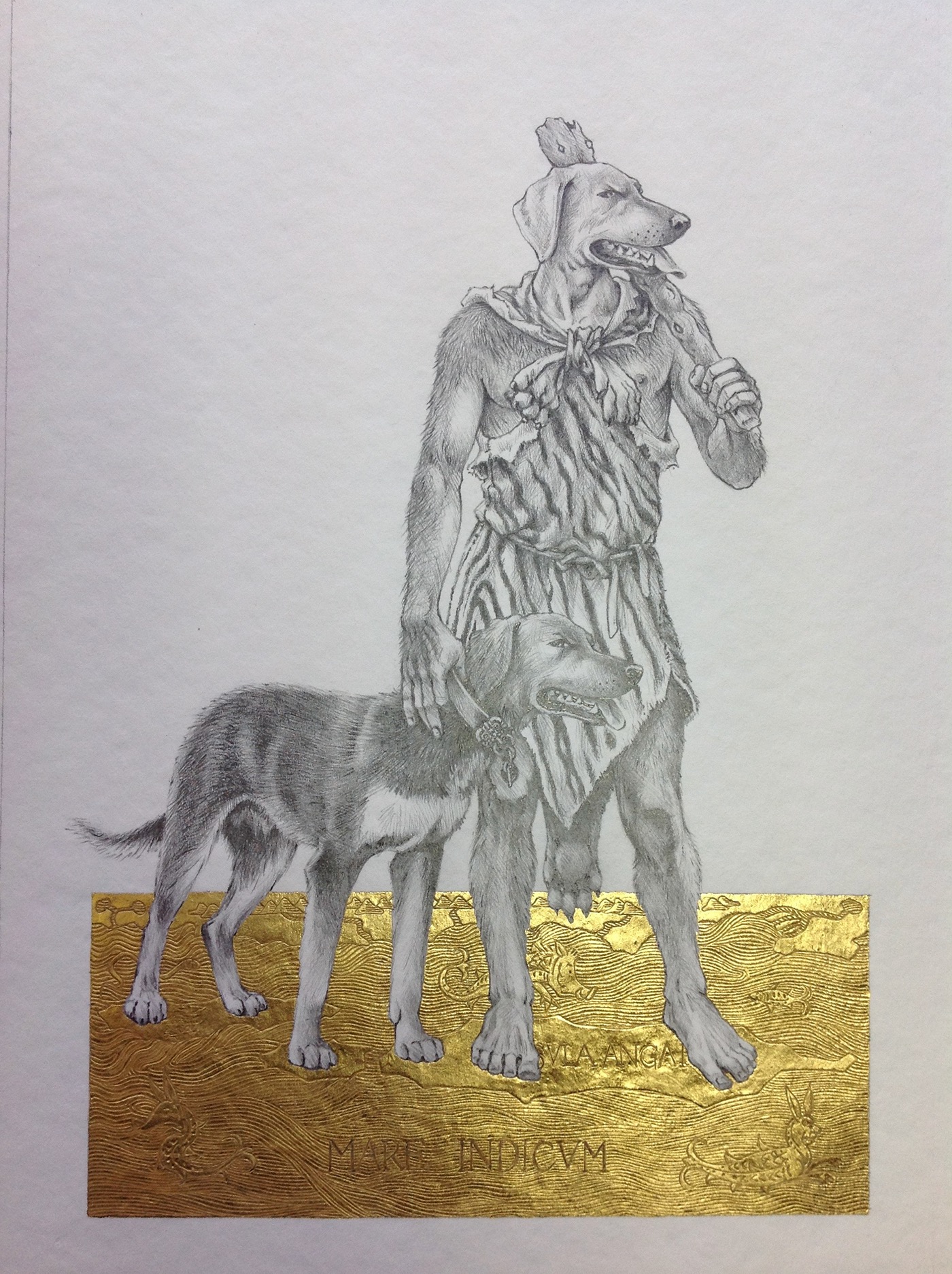
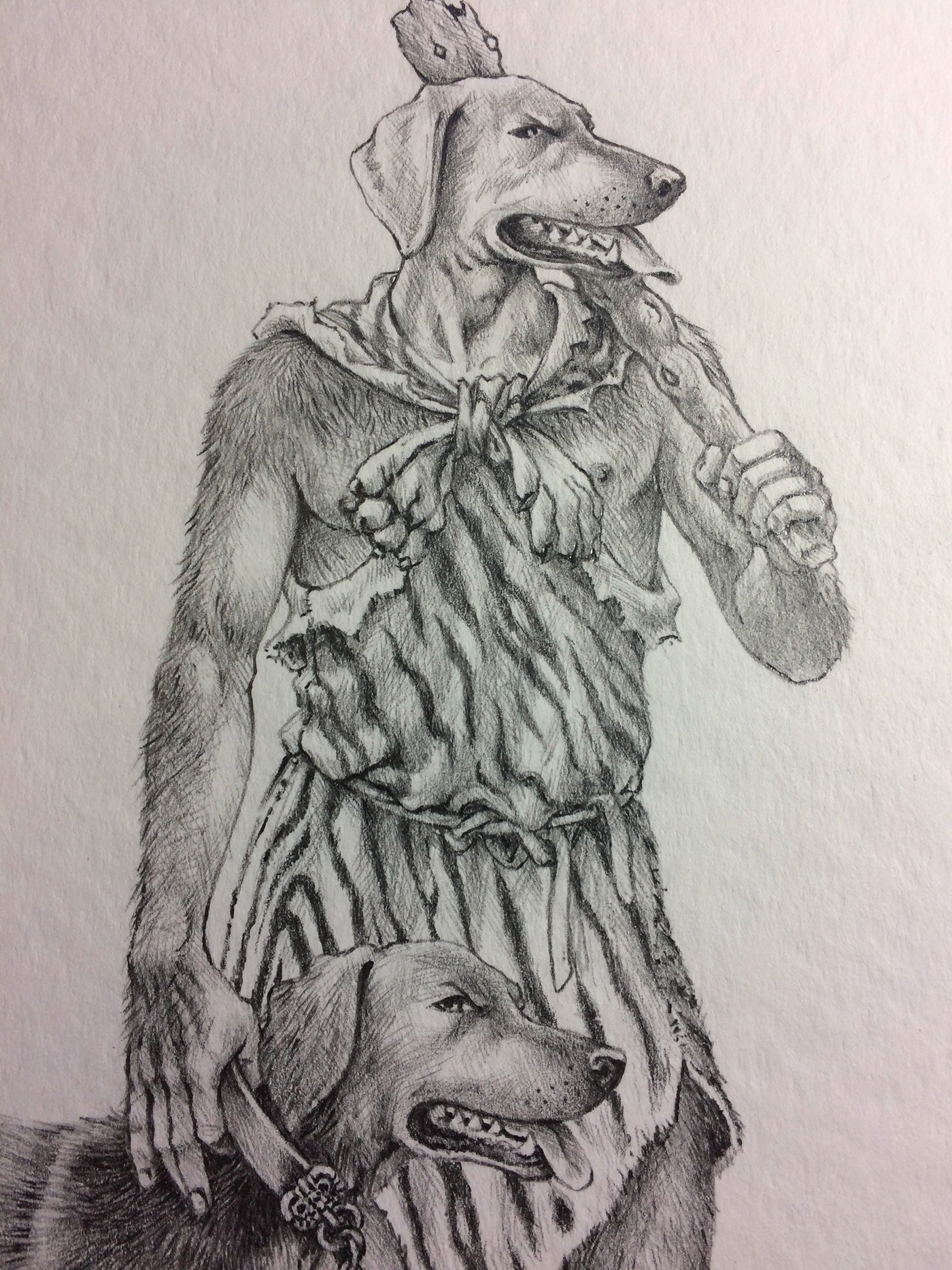

January 26th, 2017
Number 22 in this series of 25 is the snake-haired gorgon Medusa from greek mythology.
Contrary to her two sisters, only she was mortal. Nevertheless she had a formidable weapon: everybody who looked her straight in the eyes, would be turned to stone instantly.
With the help of Hermes (scythe) and Athena (mirror or shield) the greek hero Perseus cunningly succeeded to kill Medusa by decapitating her, while looking only at her reflection in the shield, thus not turning to stone.
From the blood that spurted from her neck, sprang Pegasus.
Perseus is said to have given the head, which retained the power of turning into stone all who looked upon it, to Athena. She then placed it on the mirrored shield, called Aegis.



February 7th, 2017
The 23rd illustration for my book Wonderwezens (Wondercreatures) is from the originally french medieval folktale about Melusine.
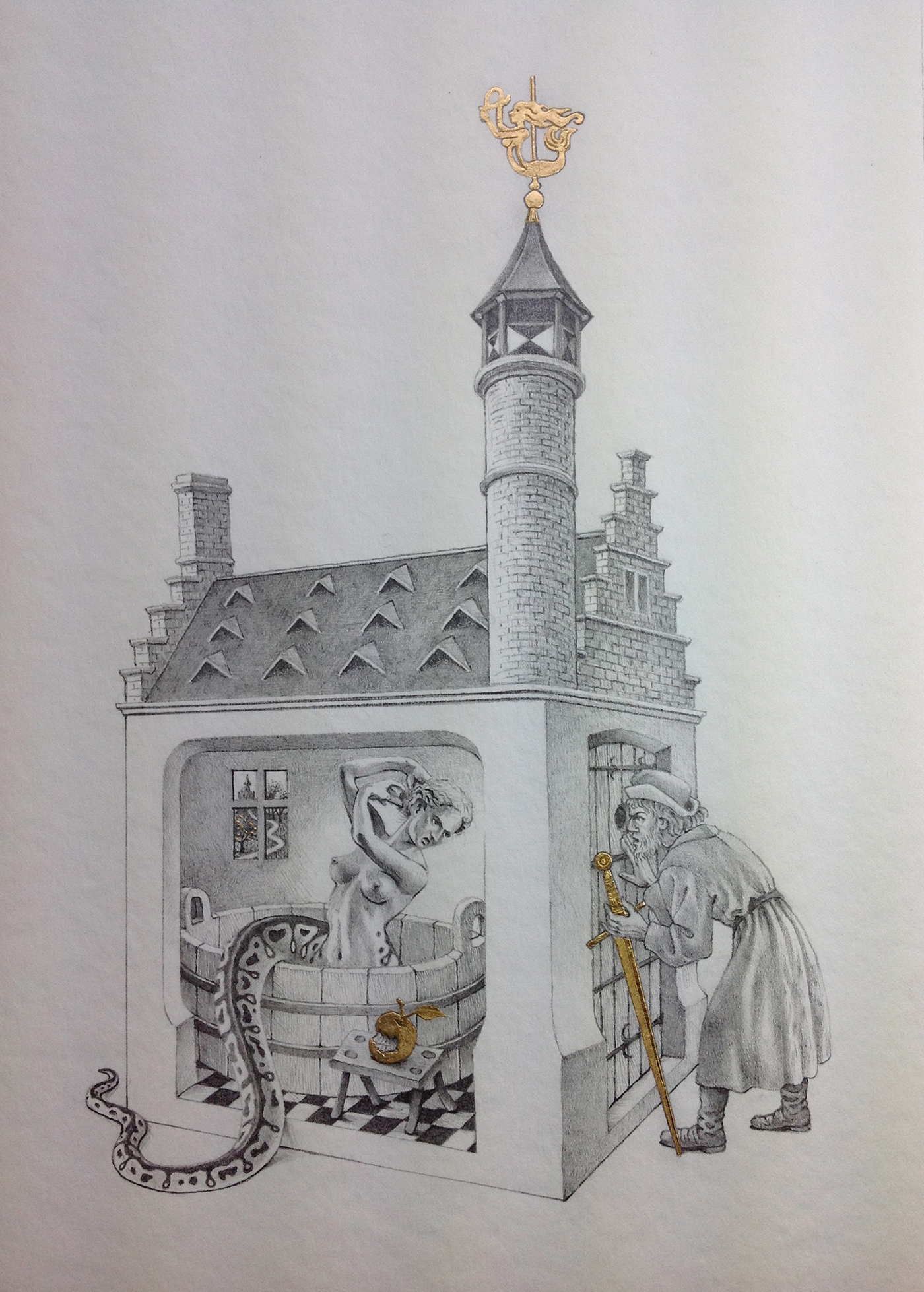
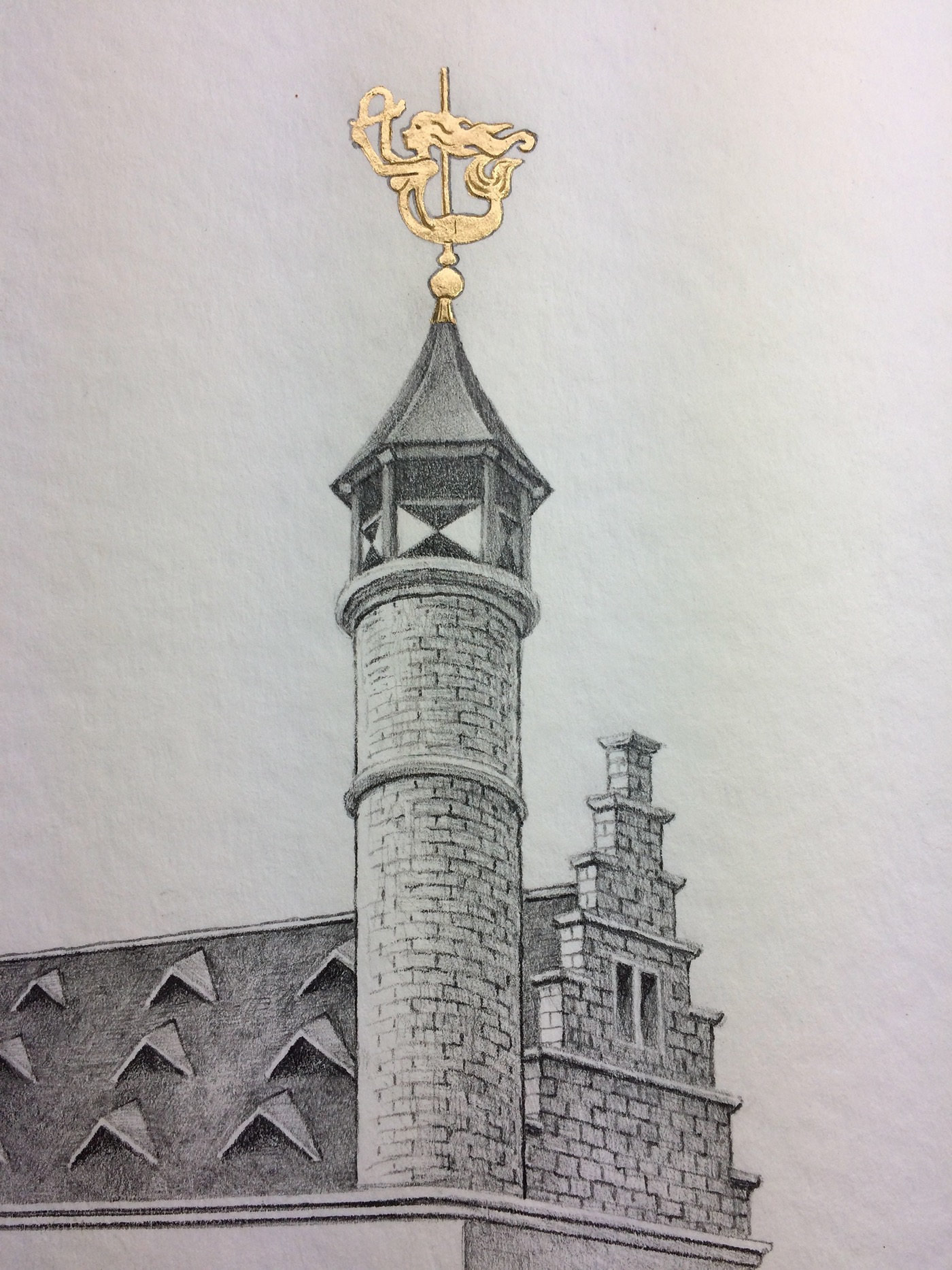
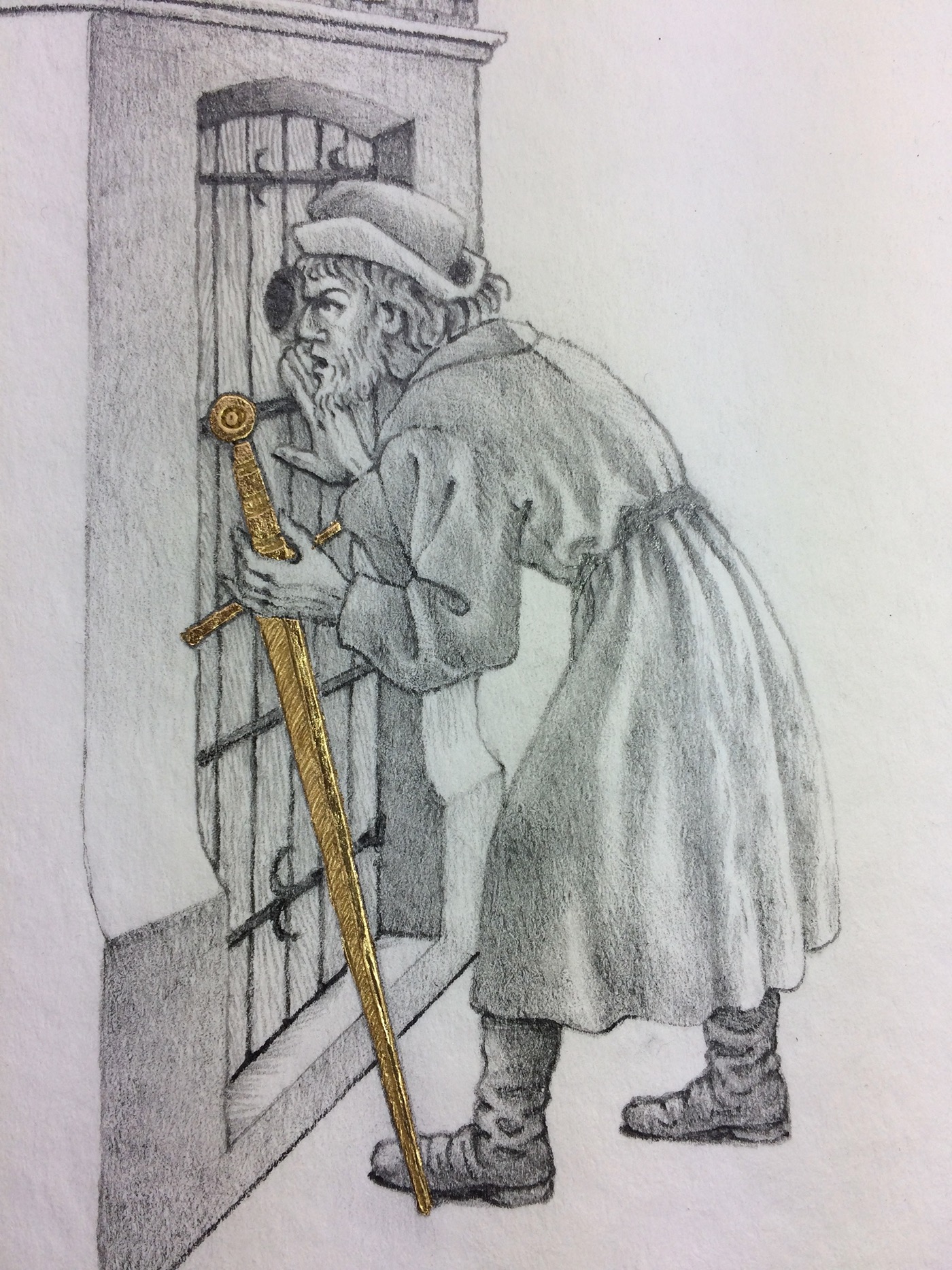

February 20th, 2017
In his sixth book of the Metamorphoses Ovid tells us of a shepherd’s daughter Arachne, who was particularly skilled at weaving. Boasting about her skill, she infuriated Athena, who appeared and contested her. Athena weaved four scenes in which the gods punished those humans that considered themselves equal to the gods and committed hubris; Arachne, on the other hand, weaved scenes in which gods abused humans and especially the adulteries of Zeus himself. Arachne’s work was clearly as good as Athena’s. But the goddess was enraged by to the lack of respect for the gods Arachne's work showed. So she teared it to pieces. She hit Arachne several times on the head with her spindle and transformed her into a spider, condemning her to weave for eternity.



February 27th, 2017
It looks like I'm ready!
I just finished the 25th and last illustration for this project "Wonderwezens" ("Wondercreatures").
This last one is the mermaid, the legendary aquatic creature with the head and upper body of a female human and the tail of a fish. They appear in the folklore of many cultures worldwide, including the Near East, Europe, Africa and Asia. Mermaids are sometimes associated with perilous events such as floods, storms, shipwrecks and drownings. In other folk traditions (or sometimes within the same tradition), they can be benevolent or beneficent, bestowing boons or falling in love with humans.
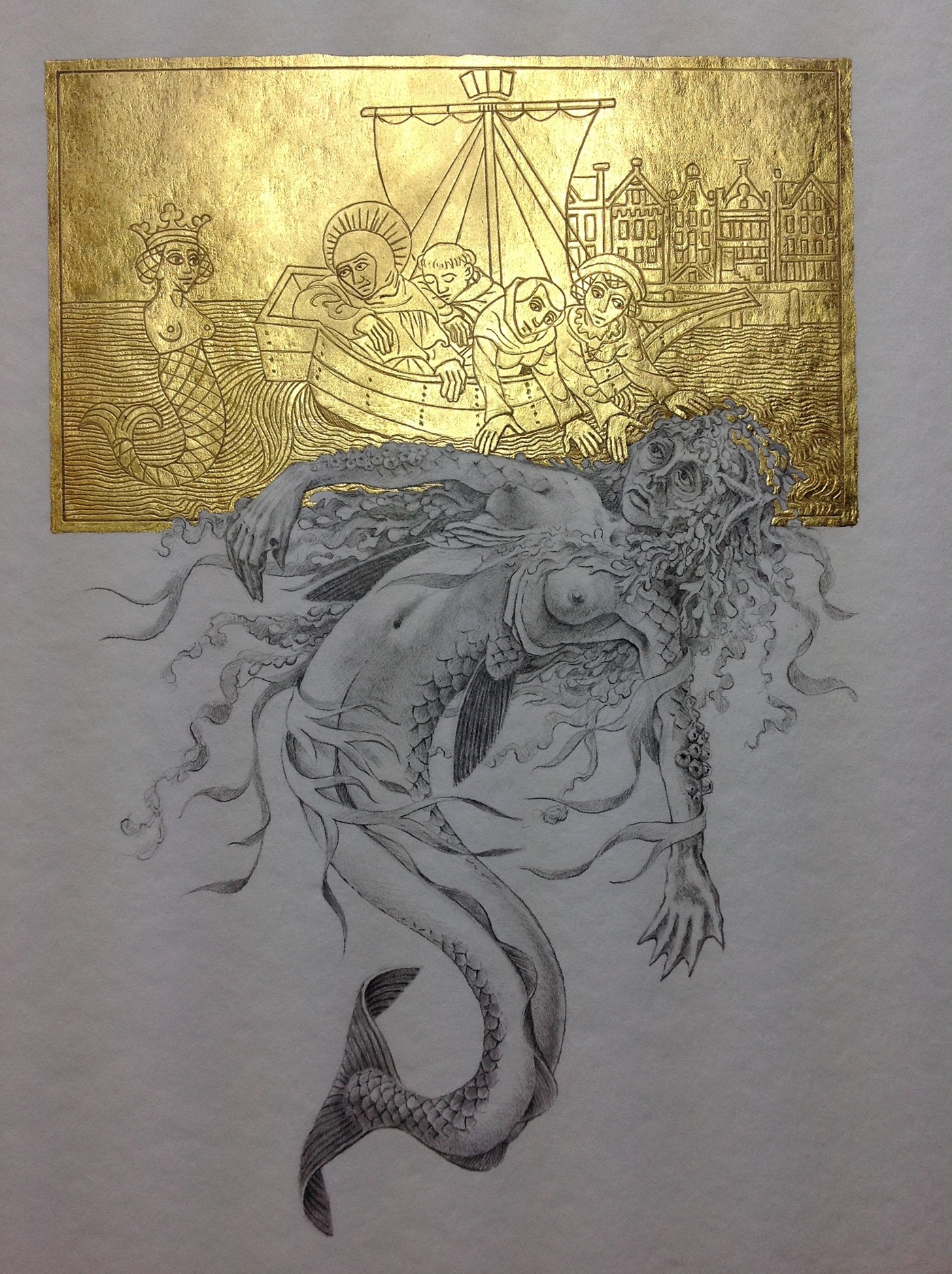

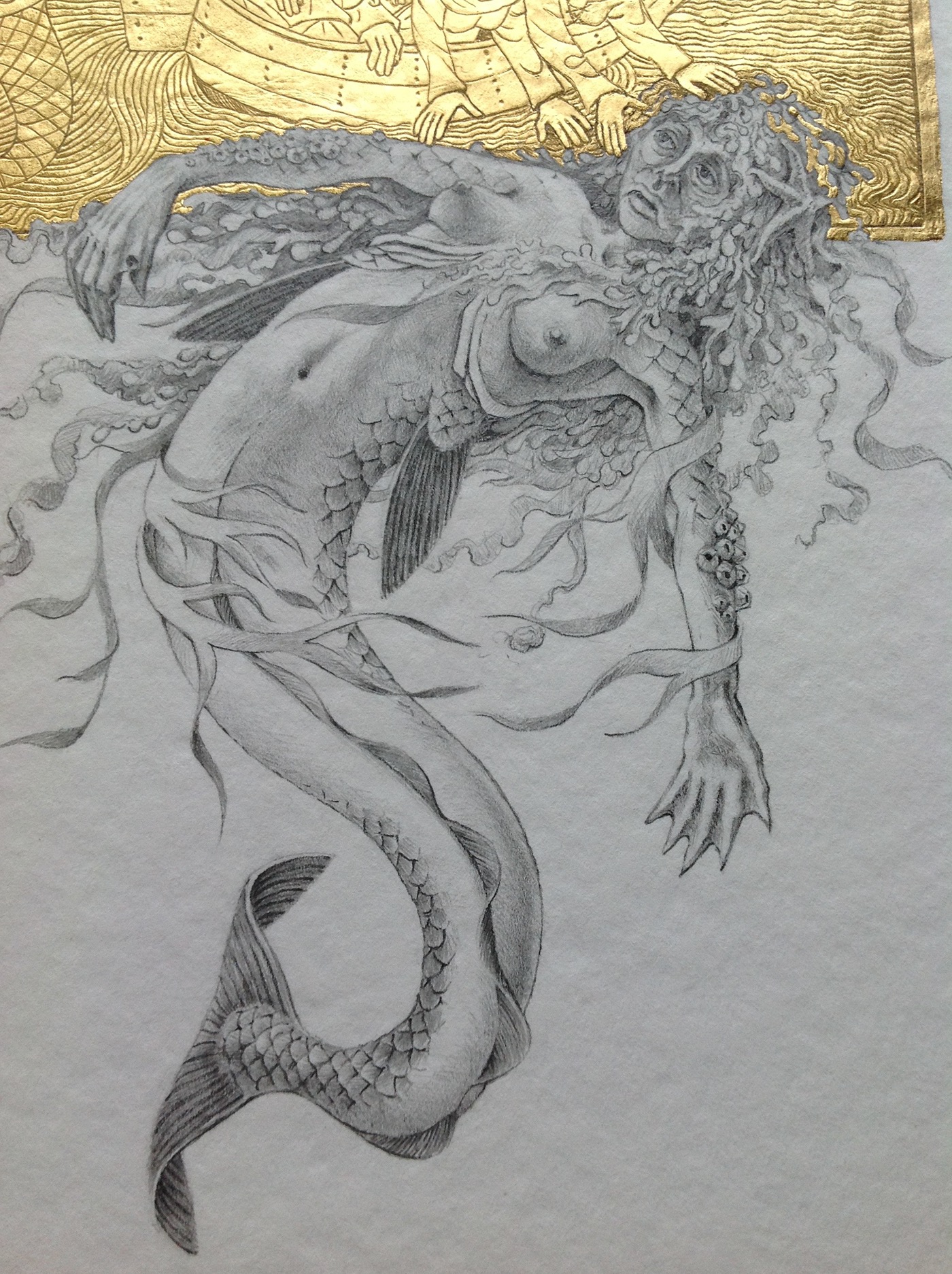
March 7th, 2017
Yesterday I travelled to Amsterdam to deliver my illustrations at the publishing house for reproduction for the book.
Especially for that occasion I made a box - a cassette so to speak - in which the 25 illustrations could be stored neatly and transported safely. I made it out of cardboard and faced it with lots of sketches that I made during the proces.
Now we'll just have to wait what will become of it.
Approximately half of May the book will see the light.
It is all very exciting!!
